
The Stack: On Software and Sovereignty
by
Benjamin H. Bratton
Published 19 Feb 2016
It does not focus on computation in the service of governance, or in resistance to governance, but rather on computation as governance. In the first chapter, I propose that we view the various types of planetary-scale computation (e.g., smart grids, cloud computing, mobile and urban-scale software, universal addressing systems, ubiquitous computing, and robotics, and so on) not as isolated, unrelated types of computation but as forming a larger, coherent whole. They form an accidental megastructure called The Stack that is not only a kind of planetary-scale computing system; it is also a new architecture for how we divide up the world into sovereign spaces. More specifically, this model is informed by the multilayered structure of software protocol stacks in which network technologies operate within a modular and interdependent vertical order.
…
It lets us see that all of these different machines are parts of a greater machine, and perhaps the diagrammatic image of a totality that such a perspective provides would, as theories of totality have before, make the composition of alternatives—including new sovereignties and new forms of governance—both more legible and more effective. As the shape of political geography and the architecture of planetary-scale computation as a whole, The Stack is an accidental megastructure, one that we are building both deliberately and unwittingly and is in turn building us in its own image. While it names the organization of a planetary-scale computing infrastructure, my purpose is to leverage it toward a broader program for platform design. In the depiction of this incipient megastructure, we can see not just new machines but also still-embryonic geopolitical institutions and social systems as well.
…
Each is described in terms of both how it resolves the emergent accidental megastructure of The Stack into one and how the essential accident of each layer, and of the combined whole, points toward very different kinds of geosocial relations and geopolitical systems, perhaps especially those determined not by today's technology but by whatever technological regime will come after planetary-scale computation. 3. Blur and Accident We start with questions that are as slippery as what they interrogate. In an age of planetary-scale computation, what is “sovereignty” and what is the future political geography, especially as the former is separated from the latter? How would the answers influence how we draw and divide up who and what goes where, and what shape the maps are that could do this?
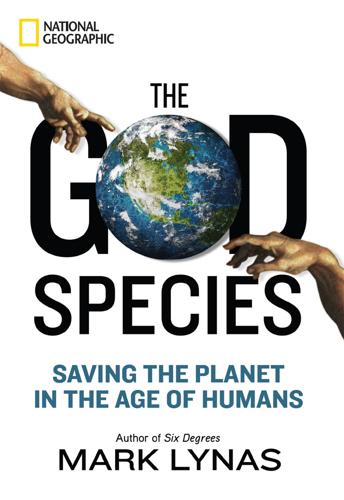
The God Species: Saving the Planet in the Age of Humans
by
Mark Lynas
Published 3 Oct 2011
To put this in context: Worldwide, 60 percent of the 227 largest rivers have been fragmented by man-made infrastructure, and the total number of dams blocking the natural flow of the planet’s watercourses is estimated at 800,000.1 These impound approximately 10,000 cubic kilometers of water—a quantity so substantial that it measurably reduces the rate of sea level rise (by about half a millimeter a year for the last half-century2) and even changes the mass distribution of the planet sufficiently to alter its axis and slightly increase the speed of its rotation.3 The sheer scale of human engineering activity on rivers has been extraordinary: On average we have constructed two large dams per day over the last fifty years, half of those in China alone.4 Humans have affected the water cycle in less visible ways too: Deforestation and irrigation are altering water-vapor flows over the planet’s surface;5 changes in land use and climate are increasing total planetary river runoff.6 Human engineering can have large-scale impacts—agriculture in Pakistan’s dry Indus Basin, supported by the largest irrigation network of canals and dams in the world, probably has a direct effect on the region’s monsoon.7 Due to the globe-girdling reach of modern human civilization, these regional and planetary-scale changes are perhaps unsurprising, for humanity has always had an umbilical connection with rivers and fresh water. Imperial capitals throughout history have lined major watercourses, from Nanjing on the Yangtze to London on the Thames. When water became scarce or was misused—as in ancient Mesopotamia or during Central America’s Classic Maya period—great civilizations could come crashing down, leaving little trace behind as their once unconquerable cities were reclaimed by sand or forest. Today we face the danger of overusing water resources on a planetary scale, and the consequences for our advanced civilization may be just as significant in the long run.
…
Venter and his team have seemingly proved that all life is reducible to chemistry—there is nothing more to it than that. No essential life force, no soul, no afterlife. With the primacy of science, there seems to be less and less room for the divine. God’s power is now increasingly being exercised by us. We are the creators of life, but we are also its destroyers. On a planetary scale, humans now assert unchallenged dominion over all living things. Our collective power already threatens or overwhelms most of the major forces of nature, from the water cycle to the circulation of major elements like nitrogen and carbon through the entire Earth system. Our pollutants have subtly changed the color of the sky, while our release of half a trillion tonnes of carbon as the greenhouse gas CO2 into the air is heating up the atmosphere, land, and oceans.
…
Instead, the overwhelming weight of scientific evidence suggests that we are fast approaching the point where our interference in the planet’s great biogeochemical cycles is threatening to endanger the Earth system itself, and hence our own survival as a species. To avert this increasing danger, we must begin to take responsibility for our actions at a planetary scale. Nature no longer runs the Earth. We do. It is our choice what happens from here. This book aims to demonstrate how our new task of consciously managing the planet, by far the most important effort ever undertaken by humankind, can be tackled. The idea for it came to me in a moment of revelation two years ago in Sweden, during a conference in the pretty lakeside village of Tällberg.
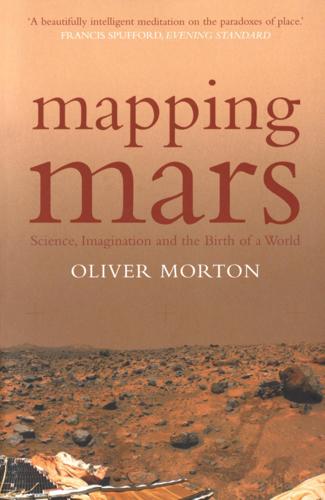
Mapping Mars: Science, Imagination and the Birth of a World
by
Oliver Morton
Published 15 Feb 2003
The mixture of strength and subtlety in the sparse landscape between the tree line and the snows clearly entrances him; when a version of that same postglacial landscape first makes its appearance on Robinson’s Mars, about a third of the way into the second volume, his delight lifts the description from the page. While many other living landscapes grace the books from then on, it is always this alpine biota, at once so enduring and so seemingly fragile, that lives in the imagination most fully, establishing a new bridge between the books’ personal and planetary scales. There’s a seeming contradiction here. The surface of Mars is extraordinarily ancient; the High Sierras are relatively young mountains, and the postglacial fell-fields above their tree lines are among the youngest of the landscapes they have to offer. But that’s the delight of Robinson’s vision.
…
Changes in the extent of continental ice cover mean that the Earth’s seas are surrounded by fossil shores above and below the current ones. During the next Ice Age, today’s shores will be anything up to a hundred yards above sea level. In some places on Mars, Parker saw half a dozen shorelines parallel to each other. Most of them, though, could not be traced for long distances. At the planetary scale there were just two: “Contact 1,” which kept close to the highland-lowland boundary, and “Contact 2,” which was farther out into the lowlands. Parker saw the two contacts—to call them shorelines in print would have been a breach of geological mappers’ objectivity—as evidence that the Martian ocean, like Lake Bonneville, had died in stages.
…
Clifford had imagined melt water from the poles filling the nooks and crannies of the megaregolith up to the same level all around the planet: The water table would be a sort of underground sea level and so it would be flat. The surface of Mars, though, is far from flat. It has a distinct slope, with the south pole about six miles higher than the northern plains. So if the water were to find its level on a planetary scale, that level could easily be deep beneath the southern highlands—and a few miles above the northern plains. The ocean’s shore would mark the contour at which the ground dipped below the water level in the aquifer. Northern ocean and southern aquifer would be part and parcel of the same thing. An ocean would not necessarily mean a warm climate, with clouds and rain and such.
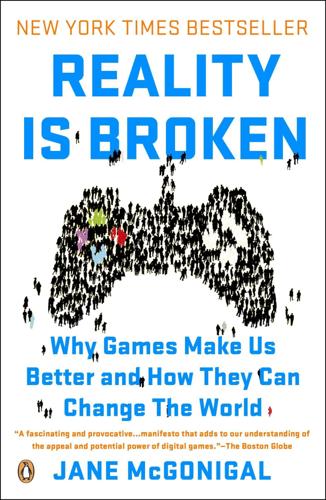
Reality Is Broken: Why Games Make Us Better and How They Can Change the World
by
Jane McGonigal
Published 20 Jan 2011
Now a different genre of games can get us where we need to go: massively multiplayer forecasting games, or forecasting games for short. Forecasting games combine collective intelligence with planetary-scale simulation. They ask players to reimagine and reinvent the way we feed ourselves, the way we transport ourselves, the way we get water, the way we design cities, the way we manufacture everything, the way we power our lives. They’re designed to create diverse communities capable of investigating the long-term challenges we face, propose imaginative solutions, and coordinate our efforts to start putting our best ideas into action at the planetary scale. It’s a process I call massively multiplayer foresight. And future-forecasting games are the perfect tool for helping as many people participate in the process as possible.9 Which brings us to our final fix for reality:FIX # 14 : MASSIVELY MULTIPLAYER FORESIGHT Reality is stuck in the present.
…
In short, social participation games are turning us into superheroes in our real lives. And every superhero needs superpowers. What kind of superpowers do we need most? Collaboration superpowers—the kind that enable us to combine forces, amplify each other’s strengths, and tackle problems at a planetary scale. CHAPTER THIRTEEN Collaboration Superpowers By the age of twenty-one, the average young American has spent somewhere between two and three thousand hours reading books—and more than ten thousand hours playing computer and video games.1 With each year after 1980 you’re born, these statistics are increasingly likely to be true.
…
The name Spore is itself an important clue: the definition of a spore, in biology, is “a reproductive structure that is adapted for dispersal and surviving for extended periods of time in unfavorable conditions.”8 It’s a perfect metaphor for the present circumstances of the human race. We have collectively entered into what is all but certain to be a time of increasingly unfavorable planetary conditions, largely of our own making—an unstable climate, extreme weather, and an increasingly depleted environment. We need to adapt for survival. We need to imagine planetary-scale solutions and disperse them as far and wide as possible. We need to become like spores ourselves. And there’s an explicit call to action to do so, for players who complete all five stages of the game successfully. Spore has what game developers call a “primary win condition”: a supergoal that represents the ultimate achievement in the game.
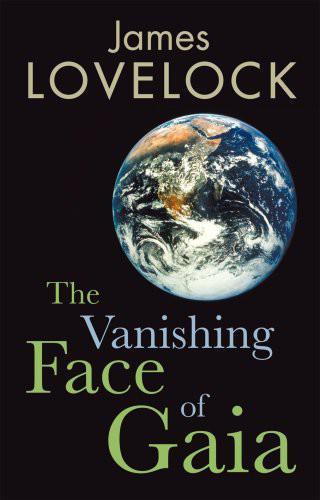
The Vanishing Face of Gaia: A Final Warning
by
James E. Lovelock
Published 1 Jan 2009
Without oxygen from photosynthesizers, for example, there would be no fires. Organisms change their world locally for purely selfish reasons: if the advantage conferred by the ‘engineering’ is sufficiently favourable it allows them, their progeny and their environment to expand until dominant on a planetary scale. Our use of fires as a biocide to clear land of natural forests and replace them with farmland was our second act of geoengineering. Third was industry for the last 200 years. Together these acts have led us and the Earth to evolve to its current state. As a consequence, most of us are now urban and our environment is an artefact of engineering.
…
Another difference was that the world was not then experiencing global dimming – the 2 to 3 degrees of global cooling caused by the atmospheric aerosol of man‐made pollution. PLANETARY MEDICINE AND ETHICS What are the planetary health risks of geoengineering intervention? Nothing we do is likely to sterilize the Earth, but the consequences of planetary‐scale intervention could hugely affect humans. Putative geoengineers are in a similar position to that of physicians before the 1940s. In his book The Youngest Profession the physician Lewis Thomas beautifully described the practice of medicine before the Second World War. There were only five effective medicines available: morphine for pain, quinine for malaria, insulin for diabetes, digitalis for heart disease and aspirin for inflammation, and very little was known of their mode of action.
…
When they do mass migration is inevitable. The recognition that we are the agents of planetary change brings a sense of guilt and gives environmentalism a religious significance. So far it is no more than a belief system that has extended the concept of pollution and ecosystem destruction from the local to the planetary scale. Maybe it will grow into a faith but it is still nascent and its dogma not yet properly codified. An environmentalist with a religious inclination might ask, ‘Was the discovery and use of fire our original sin? Were we sinful to continue to pollute the planet?’ For most of us the contrite expression of ‘Mea culpa!’
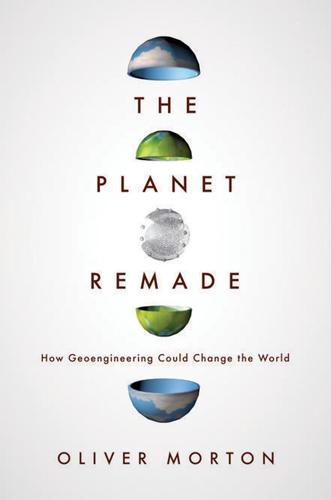
The Planet Remade: How Geoengineering Could Change the World
by
Oliver Morton
Published 26 Sep 2015
If nothing else, I think there is a particular appreciation of the wonder of the earthsystem that can be gained only by imagining how it could be changed. The ultimate challenge is not just to picture what an earth-system subject to some level of deliberate design might be like. It is to picture a world in which you would feel happy about such a design being realized. It is about finding happiness and exercising compassion on a planetary scale – a project that will have to be as political as it is scientific or technological. The goal is to help you imagine a world attractive enough that many would welcome it, but robust and provisional enough that its creation does not require everyone to agree on every aspect of it; a world that requires neither uniformity of outlook nor the suppression of dissent, but offers ways for justice and sympathy to spread out through the human world and into the earthsystem beyond
…
After the Second World War, flights to the stratosphere became much more common, and wing-borne to boot. They became less about what lay beyond, and more about what sat below; they also became much more predominantly American. In partially taming some droplets of Heard’s ocean of energy, the Manhattan Project changed the way strategists thought about power on a planetary scale. They found in the stratosphere a frontier-free high ground from which the warriors in charge of the new nuclear arsenals could look down; America’s first great expression of global power, the B-52 bomber, was accordingly named the Stratofortress. The nuclear age also realigned the interests of the military and those of scientists.
…
He believed Mars to be an older planet than the Earth, and thus both a drier one – he subscribed to a theory that all planets tended to dry out as they aged – and one with inhabitants further along the evolutionary road of progress than humans had yet travelled. Humans were already using canals to join oceans and sunder continents; Martians were advanced enough to build them on a planetary scale in order to irrigate their increasingly arid planet. The motives of the Martian canal builders, Lowell thought, were as clearly seen through the telescope as the surface of the planet itself. In his refusal to distinguish astronomical observation from sociological explanation, if nothing else, he prefigured the hybridization of the human world and the earth-system that characterizes the Anthropocene.

The Age of Illusions: How America Squandered Its Cold War Victory
by
Andrew J. Bacevich
Published 7 Jan 2020
Confident that an era of unprecedented U.S. economic, military, and cultural ascendancy now beckoned, members of an intoxicated elite threw caution to the winds. They devised—and promulgated—a new consensus consisting of four elements. The first of these was globalization or, more precisely, globalized neoliberalism. Stripped to its essence, globalization was all about wealth creation: Unconstrained corporate capitalism operating on a planetary scale in a world open to the movement of goods, capital, ideas, and people would create wealth on a hitherto unimagined scale. The second element was global leadership, a euphemism for hegemony or, more simply still, for empire. At its core, global leadership was all about order: Unchallengeable military might would enable the United States to manage and police a postcolonial yet implicitly imperial order favorable to American interests and values.
…
In effect, the so-called Free World served as a prototype for the way a globalized world might work, with barriers to trade, travel, and investment reduced and norms governing interaction between states and citizens codified. By fostering a shared (if uneven) prosperity, these arrangements had enabled the United States and its allies to best the Soviets and their allies. Replicating on a planetary scale the success achieved during the Cold War seemed an obvious next step. What had worked in the West would surely work in the East and the South as well. Although in the near term the embrace of globalization might create winners and losers, losers would have both incentive and opportunity to retool and get with the program.
…
When the Cold War ended, American elites had their chance to do just that and failed miserably. They misread the conditions and propagated a set of deeply flawed policies. Seduced by the perception that history had reached its intended conclusion, members of that elite persuaded themselves that neoliberalism implemented on a planetary scale, an approach to global leadership centered on the use or threatened use of armed force, and the abandonment of individual self-restraint—all of this unfolding under the aegis of presidents able to decipher the signs of the times—would deliver humankind to the Emerald City of prosperity, peace, and perfect freedom.
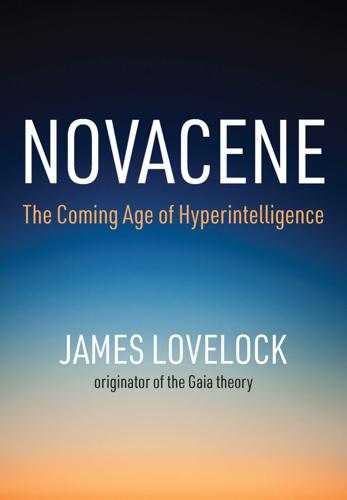
Novacene: The Coming Age of Hyperintelligence
by
James Lovelock
Published 27 Aug 2019
Black daisies absorb heat so they thrive in these low temperatures. But there are mutant white daisies which reflect heat and, as the temperature rises even further, these begin to flourish. So Daisyworld is cooled by white daisies and warmed by black ones. A simple flower is able to regulate and stabilize the environment on a planetary scale. Moreover, this stabilization emerges from a strictly Darwinian process. Scale up this model to include all the flora and fauna of Earth and you have the system I have called Gaia. In fact, you cannot actually scale it up because the system is too complex; so complex in fact that we are nowhere near fully understanding it.
…
The consequences of solar overheating are already upon us and, but for the regulatory capacity of Gaia, our planet would be moving unstoppably to a state like that of Venus now. What saves us is the continuous and sufficient pump-down of carbon dioxide from the atmosphere by land and ocean vegetation. Provided there is no planetary-scale catastrophe, habitable conditions on Earth for organic life will probably last a further several hundred million years. For electronic life forms, such a time span might seem equivalent to infinity, since they could do so much more than we can in a second of our time. For a while at least, the new electronic life might prefer to collaborate with the organic life which has done (and still does) so much to keep the planet habitable.

Reset
by
Ronald J. Deibert
Published 14 Aug 2020
More broadly, we will need to purposefully encourage innovation around alternative means of distributed communication that preserve the great strides we have made to connect individuals to each other and to vast stores of information on a planetary scale, without at the same time manipulating them towards their basest instincts. Prioritizing security of the global communications ecosystem as a whole — one that is distributed, secure, and open — would help pivot away from how it has been increasingly treated: as a “domain” to be fought over (and often seen as collateral damage) in the zero-sum game of interstate competition. An alternative “human-centric” approach to cybersecurity strives for indivisible network security on a planetary scale for the widest possible scope of human experience, and seeks to ensure that such principles are vigorously monitored and defended by multiple and overlapping forms of independent oversight and review.469 * * * If there is anything the COVID emergency makes clear, it is that we are living in a shared habitat, a true “global village,” diseases and all.
…
The gradual rollout of fifth-generation cellular technology, known as 5G, will dramatically increase the speed and broadband capacity of cellular networks, fuelling an even greater volume of data circulating among a larger number of networked devices. The combined effect of each of us turning the most intimate aspects of our digital lives inside out has created a new emergent property on a planetary scale that has taken a life of its own — derived from but separate from us, a datasphere. “Social media” (strictly understood) refers to the breed of applications that emerged in the past decade and a half, thanks largely to the extraordinary business innovations of Google and Facebook, and gave rise to what the political economist and business management professor Shoshana Zuboff has termed “surveillance capitalism.”
…
Early in my career I became familiar with signals and other electronic intelligence gathering, and was quite shocked to discover how some states had secretly developed sophisticated means and elaborate tools to intercept and monitor telecommunications and other network traffic. The U.S. National Security Agency (NSA) and its partners in the “Five Eyes” alliance (United Kingdom, Canada, New Zealand, and Australia) were doing so on a planetary scale. While marvelling at this capacity (and putting aside legal, ethical, and other reservations), I wondered why a variation of it, based on open-sourced public research, couldn’t be developed and used to turn the tables on governments themselves: to “watch the watchers” and reveal the exercise of power going on beneath the surface of our communications environment.

The Master Algorithm: How the Quest for the Ultimate Learning Machine Will Remake Our World
by
Pedro Domingos
Published 21 Sep 2015
Various research groups have used Alchemy or their own MLN implementations to solve problems in natural language processing, computer vision, activity recognition, social network analysis, molecular biology, and many other areas. Despite its successes, Alchemy has some significant shortcomings. It does not yet scale to truly big data, and someone without a PhD in machine learning will find it hard to use. Because of these problems, it’s not yet ready for prime time. But let’s see what we can do about them. Planetary-scale machine learning In computer science, a problem isn’t really solved until it’s solved efficiently. Knowing how to do something isn’t much use if you can’t do it within the available time and memory, and these can run out very quickly when you’re dealing with an MLN. We routinely learn MLNs with millions of variables and billions of features, but this is not as large as it seems because the number of variables grows very quickly with the number of entities in the MLN: if you have a social network with a thousand people, you already have a million possible pairs of friends and a billion instances of the formula Friends of friends are friends.
…
If the world is Wikipedia, we can extract the entities it talks about, group them into classes, and learn how classes relate to each other. Then if someone asks us “Is Arnold Schwarzenegger an action star?” we can answer yes, because he’s a star and he’s in action movies. Step-by-step, we can learn larger and larger MLNs, until we’re doing what a friend of mine at Google calls “planetary-scale machine learning”: modeling everyone in the world at once, with data continually streaming in and answers streaming out. Of course, learning on this scale requires much more than a direct implementation of the algorithms we’ve seen. For one, beyond a certain point a single processor is not enough; we have to distribute the learning over many servers.
…
See S curves Long-tail phenomenon, 12, 299 Long-term potentiation, 27 Loopy belief propagation, 163–164, 231 Lorenz, Konrad, 138 Low-pass filter, 133 Machine learners, knowledge engineers vs., 34–38 Machine learning, 6–10 analogy and, 178–179 bias and variance and, 78–79 big data and, 15–16 business and, 10–13 chunking, 223–227 clustering, 205–210 dimensionality reduction, 211–217 effect on employment, 276–279 exponential function and, 73–74 fitness function and, 123 further readings, 297–298 future of, 21–22 impact on daily life, 298 effect on employment, 276–279 meta-learning, 237–239 nature vs. nurture debate and, 29, 137–139 Newton’s principle and, 65–66 planetary-scale, 256–259 politics and, 16–19 principal-component analysis, 211–217 problem of unpredictability and, 38–40 reinforcement learning, 218–223, 226–227 relational learning, 227–233 relationship to artificial intelligence, 8 science and, 13–16, 235–236 significance tests and, 76–77 as technology, 236–237 Turing point and, 286, 288 war and, 19–21, 279–282 See also Algorithms Machine-learning problem, 61–62, 109–110 Machine-translation systems, 154 MacKay, David, 170 Madrigal, Alexis, 273–274 Malthus, Thomas, 178, 235 Manchester Institute of Biotechnology, 16 Mandelbrot set, 30, 300 Margins, 192–194, 196, 241, 242, 243, 307 Markov, Andrei, 153 Markov chain Monte Carlo (MCMC), 164–165, 167, 170, 231, 241, 242, 253, 256 Markov chains, 153–155, 159, 304–305 Markov logic.
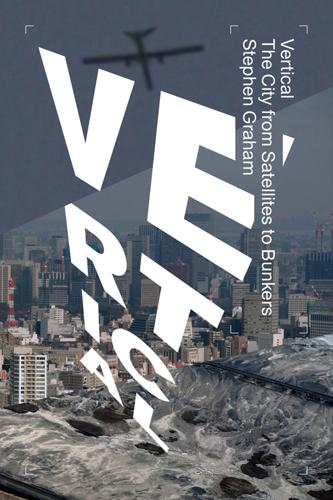
Vertical: The City From Satellites to Bunkers
by
Stephen Graham
Published 8 Nov 2016
Air: Lethal Domes Air … from Johannesburg to Tehran, to Delhi to Jakarta, isn’t about aesthetics, or even possible climate change at some point in the future: it’s about life and death now – Timothy Doyle and Melissa Risely, Crucible for Survival, 2008 Humans, increasingly, manufacture their own air. For a species which expires without breathable oxygen within two or three minutes, this human manufacture of air is of incalculable importance.1 Human existence comes only after breath.2 The process of the machinic manufacture of air happens in a variety of related ways. On a planetary scale, three centuries of rampant urban-industrial growth mean that the earth’s atmospheric composition is radically different from what it was in the mid eighteenth century. Greenhouse gas data provides the most startling examples here: CO2 levels in 2011 were 40 per cent higher than those in 1750; nitrous dioxide levels were 20 per cent higher; atmospheric methane rates were 150 per cent higher.
…
The national pollution crises in the summers of 2013 and 2015 in Singapore and other parts of Southeast Asia, for example, were caused by Sumatran slash-and-burn forest fires in Indonesian rain forests to create space for palm oil plantations.39 In 2015, Indonesian fires created such smoke problems in Singapore, Malaysia and Thailand that states of emergency were declared and half a million acute respiratory tract infections were reported in these countries. At first sight the airscapes above European, Japanese and North American cities appear to be cleaner and less deadly than those in Asia. On a planetary scale, this has been achieved partly through a massive geo-economic shift across the horizontal terrain of the earth’s surface. The huge and filthy extractive and manufacturing complexes that sustain consumption in North American and European cities is now largely offshored – strung out across China, East and Southeast Asia, Africa, Latin America and even Australia.
…
They are exemplars of a widening range of efforts, at a variety of scales, to try and make good air privately available to those who can afford it, amid an increasingly lethal exterior.76 Crucial questions surround such an incremental and haphazard privatisation of urban air through the spread of air-conditioned spaces and enclaves designed against a deteriorating exterior. Clearly, such projects inevitably become self-defeating at the urban and planetary scales. Beyond their sometimes negative impacts on those inside – who can succumb to poor health through problems such as ‘sick-building syndrome’ – these interiorised capsules of privatised air contribute disproportionately to the deterioration of the planetary climate outside their engineered bubbles.
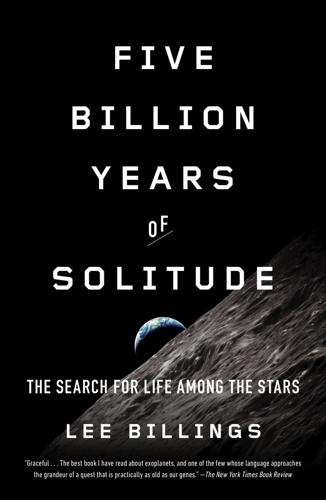
Five Billion Years of Solitude: The Search for Life Among the Stars
by
Lee Billings
Published 2 Oct 2013
The duo decided to run a modest electric current through a sealed vessel of hydrogen, methane, ammonia, and water vapor—a mixture of gases thought at the time to mimic Earth’s ancient atmosphere. After only a week the Urey-Miller experiment had synthesized a “primordial soup” of organic compounds—sugars, lipids, and even amino acids, which are the building blocks of proteins. Acting over millions of years on a planetary scale, such reactions could easily synthesize the organic ingredients for life from inorganic chemical precursors. On our own planet, the fossil record suggested that life must have already been thriving only a few hundred million years after our planet cooled from its formation; it seemed to have appeared as soon as it possibly could.
…
Mercury astronaut John Glenn, the first American to orbit the planet, predicted that within a century we would have linked atomic power plants to “anti-gravity devices,” fundamentally rewriting the laws of physics and revolutionizing life and transportation on Earth and in the heavens alike. Another Mercury astronaut, Scott Carpenter, expressed his hope that the anti-gravity “scheme” would help humans colonize the Moon, the Martian moon Phobos, and Mars. The prominent astronomer Fred Whipple suggested that Earth’s population would have stabilized at 100 billion, and that planetary-scale engineering of Mars would have altered the Red Planet’s climate to allow its 700,000 inhabitants to be self-sufficient. The director of NASA’s Office of Manned Space Flight, Dyer Brainerd Holmes, suggested that in 2063 crewed vehicles would be reaching “velocities approaching the speed of light,” and that society would be debating whether to send humans to nearby stars.
…
In his view, it was life itself that actively, unconsciously maintained the Earth’s habitability by closely coupling and coevolving with the world’s geophysical systems. The coupling was so close, he argued, that at the largest scales differences between living things and their inanimate environs became indistinct, and the world could rightly be viewed as a complex system analogous to a planetary-scale organism. He called this union of the biosphere and the rest of the Earth “Gaia” after the goddess of Mother Earth in Greek mythology. With a collaborator, the American biologist Lynn Margulis, Lovelock went on to author a large body of literature further developing the theory. Kasting’s contribution to this debate came from his study of carbon cycles for his PhD thesis, which was on the rise of oxygen on the prebiotic Earth.
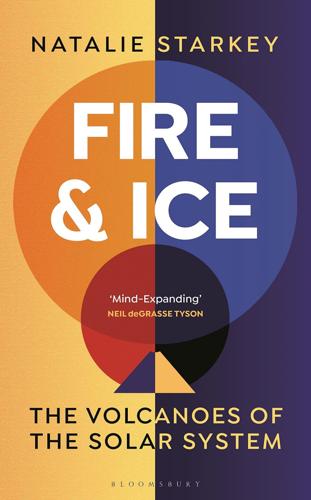
Fire and Ice: The Volcanoes of the Solar System
by
Natalie Starkey
Published 29 Sep 2021
I’m talking here about factors like crushing pressures, vacuum or extremes in temperature, to mention just a few. They not only affect how a volcano erupts, but what happens to the material, or magma, it brings to the surface. Nevertheless, if scientists are to understand the inner workings of planets, then looking at what happens on the surface is a great place to begin. It’s a case of planetary-scale bookkeeping, documenting past events in order to piece together their history. Active planetary bodies literally spew out their insides, which offers a glimpse of what they contain. Scientists just need to be mindful of how the seemingly bizarre environments of these foreign worlds affect the volcanoes they host, and the materials they produce.
…
Aluminium-26, for example, with a half-life of just 700,000 years, was almost all decayed away within about the first 100 million years after the formation of the planets. However, this doesn’t mean that such shorter-lived isotopes have had a lesser effect on planetary evolution. During the time that aluminium-26 was active and generating heat, it was an incredibly effective source of planetary-scale warming. The heat produced was enough, in fact, to melt the planetesimals within which it was contained, turning their rocky interiors into molten rock, or magma. This was probably the case even on much smaller objects like the asteroids, such is the effectiveness of aluminium-26’s heat production.
…
The problem with a planetary body cooling too quickly is that once its insides have passed the point where they are no longer able to convect, the planet won’t be capable of fuelling significant geological processes at its surface. A planet that is cold inside, with no volcanism, is a dead one. Nevertheless, without planetary-scale cooling in the first place, we would never have seen volcanic features on these bodies either. In terms of making a life-giving, geologically interesting planet, the planet must cool at just the right rate such that a sustained level of volcanic activity can be maintained, and not too quickly that the activity dwindles away and the planet dies.

Futureproof: 9 Rules for Humans in the Age of Automation
by
Kevin Roose
Published 9 Mar 2021
I just want to encourage you to examine your relationship to your devices—which are, after all, the robots we spend the most time with. It’s odd to think of our devices as robots. But our phones, tablets, laptops, smartwatches, PCs, and connected home devices are, in fact, conduits for some of the most advanced forms of AI ever created. Companies like Facebook, Google, and Twitter have built sophisticated, planetary-scale machine-learning algorithms whose entire purpose is to generate engagement—which is to say, to short-circuit your brain’s limbic system, divert your attention, and keep you clicking and scrolling for as long as possible. These technologies have fundamentally changed what it means to use a device.
…
Consequentialism Some of the most valuable skills in the future will involve thinking about the downstream consequences of AI and machine learning and understanding the effects these systems are likely to have when they’re unleashed into society. We now know some of the unintended consequences of planetary-scale AI systems like Facebook and YouTube, and how the engineers and executives who conceived those systems failed to appreciate the ways the products they built could be misused, exploited, and gamed. Most of these systems, I believe, were not intentionally designed to create harm. Instead, I think their founders and engineers were idealists who thought that having good intentions mattered more than producing good outcomes.

The Inevitable: Understanding the 12 Technological Forces That Will Shape Our Future
by
Kevin Kelly
Published 6 Jun 2016
We collectively run the network, a network no one owns, or rather everyone owns. Our contributions can’t be sold, nor do we have to be marketed to while we make and play games within one extended interconnected space. The Greater World is the largest co-op in history, and for the first time we have a hint of a planetary-scale governance. The game world’s policies and budget are decided by electronic votes, line by line, facilitated with lots of explaining, tutorials, and even AI. Now over 250 million people want to know why they can’t vote on their national budgets that way too. In a weirdly recursive way, people create teams and co-ops within the Greater World to make stuff in the real world.
…
In fact, we are running out of prefixes to indicate how big this new realm is. Gigabytes are on your phone. Terabytes were once unimaginably enormous, yet today I have three terabytes sitting on my desk. The next level up is peta. Petabytes are the new normal for companies. Exabytes are the current planetary scale. We’ll probably reach zetta in a few years. Yotta is the last scientific term for which we have an official measure of magnitude. Bigger than yotta is blank. Until now, any more than a yotta was a fantasy not deserving an official name. But we’ll be flinging around yottabytes in two decades or so.
…
As far as I can tell, the impossible things happening now are in every case due to the emergence of a new level of organization that did not exist before. These incredible eruptions are the result of large-scale collaboration, and massive real-time social interacting, which in turn are enabled by omnipresent instant connection between billions of people at a planetary scale. Just as fleshy tissue yields a new, higher level of organization for a bunch of individual cells, these new social structures yield new tissue for individual humans. Tissue can do things that cells can’t. The collectivist organizations of Wikipedia, Linux, Facebook, Uber, the web—even AI—can do things that industrialized humans could not.

Survival of the Richest: Escape Fantasies of the Tech Billionaires
by
Douglas Rushkoff
Published 7 Sep 2022
By becoming a premium member of Singularity University, “entrepreneurial leaders ” can learn to “envision and master the future.” Individuals who are daring enough to “improve the lives of billions of people” can join the executive programs at SU, learn the “power of exponential thinking,” and “leverage the power of exponential technologies to make a positive impact at planetary scale.” To that end, they also started the XPRIZE competition, offering grants such as $100 million for the best solution for carbon removal. With endorsers including Richard Branson, Buzz Aldrin, Tom Hanks, and Pharrell Williams, the whole project seems prophylactically insulated against buzzkill.
…
Chapter 9: Visions from Burning Man 112 Shark Tank : A reality show where entrepreneurs pitch billionaires including Mark Cuban and Barbara Corcoran for investment. 113 “It’s well documented” : Nellie Bowles, “ ‘Burning Man for the 1%’: The Des ert Party for the Tech Elite, with Eric Schmidt in a Top Hat,” Guardian , May 2, 2016, https:// www .theguardian .com /business /2016 /may /02 /further -future -festival -burning -man -tech -elite -eric -schmidt. 113 “It’s important” : Bowles, “ ‘Burning Man for the 1%.’ ” 118 funneling capital from Colombia : Keith Larsen, “Investors Accuse Prodigy Network of Fraud at Troubled Park Ave Development,” Real Deal, September 24, 2020, https:// therealdeal .com /2020 /09 /24 /investors -accuse -prodigy -network -of -fraud -at -troubled -park -ave -development /. 118 charges of fraud : Global Property and Asset Management Inc., “Panic at Prodigy,” October 3, 2019, https:// globalpropertyinc .com /2019 /10 /03 /panic -at -prodigy /. 118 “game of life” : “Akasha—The Game of Life,” https:// www .playakasha .com, accessed August 10, 2021. 119 “exponential technologies … moonshots” : Singularity University, “An Exponential Primer,” https:// su .org /concepts /, accessed August 10, 2021. 119 “entrepreneurial leaders … planetary scale” : Singularity University, “Singularity University,” https:// su .org /, accessed August 10, 2021. 120 MacArthur Foundation : MacArthur Foundation, “100 & Change,” https:// www .macfound .org /programs /100change /. 122 She hated Robert Moses’s : Jane Jacobs, Systems of Survival: A Dialogue on the Moral Foundations of Commerce and Politics (New York: Random House, 1992). 123 new urbanism now amounts to : Rushkoff, Life Inc.: How Corporatism Conquered the World, and How We Can Take It Back (New York: Random House, 2009), 74–83. 124 Rutt has applied : Jim Rutt, “A Journey to Game B,” Medium , January 14, 2020, https:// medium .com /@memetic007 /a -journey -to -gameb -4fb13772bcf3. 125 President Eisenhower : Center for the Study of Digital Life, http:// digitallife .center /, accessed August 10, 2021. 125 “Yet in holding scientific” : Dwight D.
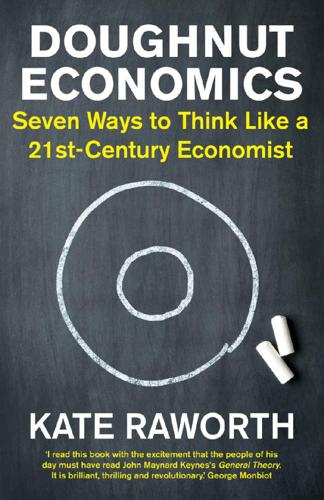
Doughnut Economics: Seven Ways to Think Like a 21st-Century Economist
by
Kate Raworth
Published 22 Mar 2017
Since 1950 there has been an accompanying surge in ecological impacts, from the build-up of greenhouse gases in the atmosphere to ocean acidification and biodiversity loss.24 ‘It is difficult to overestimate the scale and speed of change,’ says Will Steffen, the scientist who led the study documenting these trends. ‘In a single lifetime humanity has become a planetary-scale geological force … This is a new phenomenon and indicates that humanity has a new responsibility at a global level for the planet.’25 This Great Acceleration in human activity has clearly put our planet under pressure. But just how much pressure can it take before the very life-giving systems that sustain us start to break down?
…
No wonder that, since 1970, the number of mammals, birds, reptiles, amphibians and fish worldwide has fallen by half.31 Although the global scale of chemical pollution has not yet been quantified, it is of great concern to many scientists. And human pressure on other critical Earth-system processes – such as freshwater withdrawals and ocean acidification – continues to rise towards planetary-scale danger zones, creating local and regional ecological crises in the process. This stark picture of humanity and our planetary home at the start of the twenty-first century is a powerful indictment of the path of global economic development that has been pursued to date. Billions of people still fall far short of their most basic needs, but we have already crossed into global ecological danger zones that profoundly risk undermining Earth’s benevolent stability.
…
And in Kokstad, South Africa – the fastest-growing town in KwaZulu Natal – the local municipality has teamed up with urban planners and community groups in using the Doughnut to envision a sustainable and equitable future for the town.41 Initiatives like these are ambitious experiments in reorienting economic development, but is the Doughnut’s planetary scale simply too ambitious for economics to handle? Not at all: it is a scale whose time has come. Back in Ancient Greece when Xenophon first posed the economic question, ‘How should a household best manage its resources?’ he was literally thinking about a single household. Towards the end of his life he turned his attention to the next level up, the economics of the city state, and proposed a set of trade, tax and public investment policies for his home town of Athens.
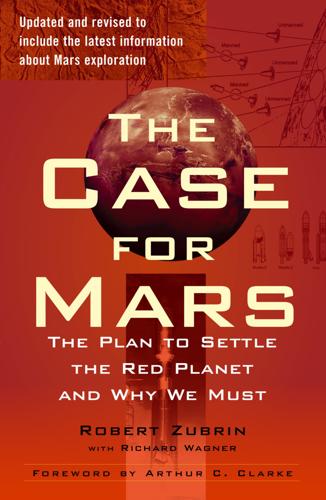
Case for Mars
by
Robert Zubrin
Published 27 Jun 2011
No, if you want to find yourself a fossilized dinosaur, or Martian stromatelite, you better be prepared to do quite a bit of travel>LiAnd if you want prove that they’re not there, you’ll have to travel even more, because the ability to demonstrate a convincing negative result will depend upon a search of virtually the planet’s entire surface. In the end, the mobility requirements of Martian exploration are profoundly simple: to explore a planet you need mobility on a planetary scale. It’s a simple but often overlooked point. So how will the crew of our first piloted Mars mission get around? The battery-powered Lunar rover used during the Apollo program had a one-way range of about 20 kilometers, giving it a sortie range of 10 kilometers from the landing site. A manned Mars expedition equipped with equivalent transportation would be able to explore only about 300 square kilometers, regardless of the length of its surface stay, and nearly half a million such missions would be required to examine the entire surface of Mars just once.
…
Where I live in Colorado, it can be winter on the north side of the house while it is summer on the south side, and it is not uncommon even on a blistering, mid-August day to come across snow nestled in a shady depression of a hill’s northern side. Without a doubt in some cold crevice, lava tube, or cavern on the north face of some hill on Mars there is ice to be found, and in regions where planetary-scale climate models say it can’t be. If you want to harvest some, though, bring dynamite. Ice at Martian temperatures can be pretty tough stuff. Still, a pure ice deposit in a nonpolar region would be a rare find. It’s much more likely that Martian explorers would come across permafrost, or frozen mud.
…
(Artwork Robert Murray, courtesy Lockheed Martin) NIMF Rocketplane. (Artwork Robert Murray, courtesy Lockheed Martin) NIMFs—Nuclear Rockets using Indigenous Martian Fuels—as rocketplanes or as ballistic spacecraft would afford Mars explorers and later colonists unlimited mobility on a planetary scale. Exploration team on a partially terraformed Mars. (Artwork by Michael Carroll) The New Created World. (Artwork by Michael Carroll) Liquid water once coursed over the face of Mars and, given the technological capabilities of the twenty-first century, it may once again. Several decades of terraforming could transform Mars into a relatively warm and slightly moist planet suitable some day for explorers without space-suits, although breathing gear would still be required.

Smart Cities: Big Data, Civic Hackers, and the Quest for a New Utopia
by
Anthony M. Townsend
Published 29 Sep 2013
The new IBM would focus solely on services and integration of large-scale, complex information systems. In 1995 the company abandoned its famously strict employee dress code. A decade later, in 2004, it was ready to jettison the personal-computer division that had so recently defined it. The new IBM wasn’t a staid purveyor of hardware; it was a general contractor for planetary-scale computing. Less than three years before the centennial, in 2008, company chairman Sam Palmisano had launched IBM’s Smarter Planet campaign in a speech to the Council on Foreign Relations.22 If Siemens and Cisco aim to be the electrician and the plumber for smart cities, IBM’s ambition is be their choreographer, superintendent, and oracle rolled into one.
…
These cities placed vastly more calls than they received, as their residents gathered information and disseminated decisions from headquarters to the hinterlands. In the 1980s New York University’s Mitchell Moss expanded the analysis to the whole world, using similar data to show how Wall Street banks and Midtown media giants were extending this informational trade imbalance to a planetary scale, exploiting new telecommunications technologies to consolidate and dominate entire global markets.26 In 2008 MIT’s SENSEable City Lab brought these studies into the supercomputer age. The “New York Talk Exchange” visualized a year’s worth of phone traffic between New York and the world carried over AT&T’s global network.
…
The idea of a single, utopian design for the smart city has kept us from the hard work of building a rich and varied collection of ones that we can actually live with. Since 2008, the vision of our urban future has come to be dominated by companies that would repeat the cookie-cutter city designs of the twentieth century on a planetary scale, powered by the technology of global enterprise. Our mayors are putting their own spin on these designs, but they can’t solve all of our problems. The answer lies at the grass roots. I see it blossoming everywhere as we take these tools out into the streets and use them to reimagine and remake our world.
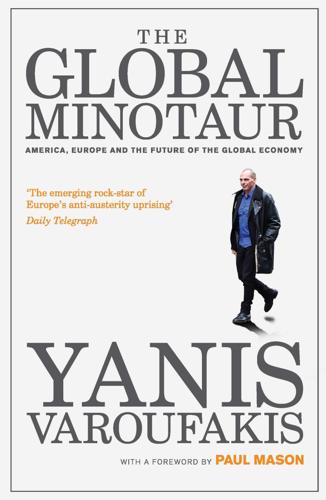
The Global Minotaur
by
Yanis Varoufakis
and
Paul Mason
Published 4 Jul 2015
By means of a permanent tsunami of capital that rushed ceaselessly across the two great oceans to finance America’s twin deficits. The twin deficits of the US economy thus operated for decades like a giant vacuum cleaner, absorbing other people’s surplus goods and capital. While that ‘arrangement’ was the embodiment of the grossest imbalance imaginable on a planetary scale, and required what Paul Volcker described vividly as ‘controlled disintegration in the world economy’, nonetheless it did give rise to something resembling global balance: an international system of rapidly accelerating asymmetrical financial and trade flows capable of creating a semblance of stability and steady growth.
…
That is, a surplus recycling scheme that would not rely on some bright officials and the unaccountable financial sector of a single country, as the Global Minotaur was, but on a well-run, global organisation that consciously and transparently sets the parameters for the recycling of goods, profits, savings and demand. Two years later, Strauss-Kahn’s daring statement appears more like ‘famous last words’ than a genuine programme for policy change on a planetary scale. Indeed, the very image of a handcuffed Strauss-Kahn being forced into a NYPD car, a few weeks after he had made that statement to the BBC, is deliciously symbolic of the flicker-like nature of the elites’ post-2008 rethink. Since then, dominant politicians, heads of the IMF and the World Bank, private and central bankers alike, generally the stewards of world capitalism, seem to have chosen to un-learn very quickly the lessons of 2008.
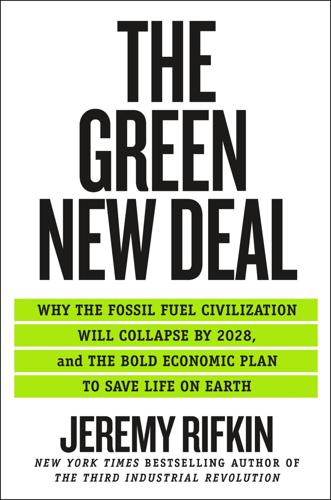
The Green New Deal: Why the Fossil Fuel Civilization Will Collapse by 2028, and the Bold Economic Plan to Save Life on Earth
by
Jeremy Rifkin
Published 9 Sep 2019
CPS Energy, “Who We Are,” https://www.cpsenergy.com/en/about-us/who-we-are.html (accessed February 22, 2019). 59. Greg Harman, “Jeremy Rifkin on San Antonio, the European Union, and the Lessons Learned in Our Push for a Planetary-Scale Power Shift,” San Antonio Current, September 27, 2011, https://www.sacurrent.com/sanantonio/jeremy-rifkin-on-san-antonio-the-european-union-and-the-lessons-learned-in-our-push-for-a-planetary-scale-power-shift/Content?oid=2242809 (accessed March 24, 2019). 60. Business Wire, “RC Accepts Application for Two New Nuclear Units in Texas,” news release, November 30, 2007, https://www.businesswire.com/news/home/20071130005184/en/NRC-Accepts-Application-Nuclear-Units-Texas (accessed March 14, 2019). 61.

The Demon in the Machine: How Hidden Webs of Information Are Finally Solving the Mystery of Life
by
Paul Davies
Published 31 Jan 2019
Scientists are just beginning to understand the power of information as a cause that can actually make a difference in the world. Very recently, laws that interweave information, energy, heat and work have been applied to living organisms, from the level of DNA, through cellular mechanisms, up to neuroscience and social organization, extending even to a planetary scale. Looking through the lens of information theory, the picture of life that emerges is very far from the traditional account of biology, which emphasizes anatomy and physiology. Many people have helped me in assembling the contents of this book. A lot of the ideas I present here originate with my colleague Sara Walker, Deputy Director of the Beyond Center for Fundamental Concepts in Science, who has greatly influenced my thinking over the past five years.
…
So it’s possible to bracket the range of chemical complexity, but where along the line of molecules from amino acids and sugars to ribosomes and proteins could one say that life was definitely involved? Is it even possible to identify life purely from its chemical fingerprint?fn3 Many scientists prefer to think of life as a process rather than a thing, perhaps as a process that makes sense only on a planetary scale.6 (See Box 12 in Chapter 6.) THE TALE OF THE ANCIENT MOLECULE Some type of life has existed on Earth for about 4 billion years. During that time there have been asteroid and comet bombardments, massive volcanism, global glaciation and an inexorably warming sun. Yet life in one form or another has flourished.

Cities Under Siege: The New Military Urbanism
by
Stephen Graham
Published 30 Oct 2009
In addition, global scales of flow and connection dominate the discourse: technological mastery, omnipotent surveillance, real-time situational awareness, and speed-of-light digital interactions have been widely portrayed as processes intrinsically capable of endowing the US military with ‘full spectrum dominance’ on a planetary scale, irrespective of the geographical terrain to be dominated. RMA discourses have, in this sense, been signally a-geographical. Little account has been taken of the specificities of the spaces and geographical terrains inhabited by US adversaries in the post–Cold War period, or of the changes wrought through urbanization.
…
The United State’s hegemonic capabilities for surveilling Earth from the distant, vertical domains of air and space were deemed by the DSB to show ‘poor capability for finding, identifying and tracking’ what it called ‘unconventional war targets’, such as ‘individuals and insurgent or terrorists groups that operate by blending in with the larger society’.30 What was needed, argued the DSB report, were intimate and persistent military surveillance systems which penetrated the details of everyday urban life, both at home and abroad. Little less than a comprehensive rescaling of military surveillance would be necessary; ‘more intimate, terrestrial, 21st century ISR [Intelligence, Surveillance and Reconnaissance] were required’.31 The gaze of hegemonic military power, the report contended, must not only colonize the planetary scales of surveillance; it must penetrate the fine-grained local geographies of urban and infrastructural battlespaces. Such a transformation would be temporal as well as geographical. ‘The surveillance of people, things and activities required to populated the databases needed for identification, location and tracking,’ the DSB report stated, ‘will require a persistence beyond that typical of many of today’s’ military and security surveillance systems.
…
SUVs are exactly that, they are armored cars for the battlefield’.86 Such invocations of a new and deeply insecure medievalism within the militarized borderland of the domestic US city fit with the more general suggestions of right-wing foreign policy commentators such as Robert Kaplan, who speaks of the ‘coming anarchy’ on a planetary scale, which will reduce our world to an assortment of lawless ‘feral cities’,87 where only the strongest – and the most aggressively militarized – will survive or prosper. 88 Here again, deeply anti-urban rhetoric blends into geopolitical imaginations, with the SUV linking the two. As George Monbiot quipped in the Guardian, perhaps the Hummer patriots, as they lumbered around US cities in their massive vehicles, ‘should also have been demonstrating their love for their country by machine-gunning passers-by’.89 THE PENTAGON PIMPS OUT Given this general backdrop, it is not surprising to discover that, in addition to using familiar recruiting tactics such as air shows and car races, the US military has exploited the Hummer.
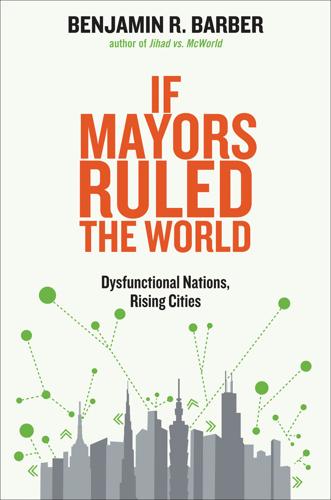
If Mayors Ruled the World: Dysfunctional Nations, Rising Cities
by
Benjamin R. Barber
Published 5 Nov 2013
The urban philosopher Constantinos Doxiadis, pursuing his own science of human development he calls Ekistics, has predicted the emergence of a single planetary city—Ecumenopolis.21 Doxiadis gives a sociological and futurist spin to science fiction writers like Isaac Asimov and William Gibson who for decades have been imagining urban agglomerations on a planetary scale.22 Just beyond the global village, pushing out from the imagined Ecumenopolis, one can catch a glimpse of Gaia, that mythic organic entity that, in the hypothesis posited by James Lovelock, is as an evolving and self-regulating system in which biosphere, atmosphere, hydrosphere, and pedosphere all work together on behalf of a sustainable and integral planet, though whether it is urban or not, or even includes humanity, remains a puzzle.
…
Without exceeding the limits of what is actually in process today—leave aside fantasies of Ecumenopolis and Gaia and interstellar migrations of cities—a realistic road to cosmopolis and a world governed by mayors lies before us. It is left to us only to determine whether we wish to take it, and in doing so, take democracy to planetary scale. For all the contradictions and obstacles presented by cities, they remain a formidable alternative to the conventional nation-state paradigm in which our thinking has been imprisoned for the past three centuries. The very term inter-national assumes that nation-states must be the starting place for inter-relational thinking.
…
Before any convincing argument can be made on behalf of global governance by cities, we are obliged to ask whether such a development is going to improve or depress the condition of people in either the developing world’s “planet of slums” or the first world’s planet of radical inequalities. Do we truly wish, with our parliament of mayors, to globalize urban injustice or give corruption a formal role in governance? Does such an innovation merely replicate urban segregation on a planetary scale? Surely we would prefer to believe that, despite the harsh realities of urban life, cities over time can ameliorate the challenges of inequality and poverty and find ways to impact and even transform slums. Yet though as sites of experimentation and progressive innovation, cities continue to contribute new approaches to mitigating and overcoming inequality—some of which we will explore in Chapter 8—the truth is that urban inequality is a persistent and distressing feature of modern cities and the contemporary world, above all in the developing world, where most slums are found, and which have been hardest hit by the global financial crisis and the global economic inequities occasioned by the self-serving “austerity” policies of the wealthy (austerity for you, profits for us).

The Democracy Project: A History, a Crisis, a Movement
by
David Graeber
Published 13 Aug 2012
b One does sometimes worry that the Gouverneur Morrises of the world have ultimately been successful in preventing such knowledge from reaching most of the population. c It wouldn’t have to be based on a system of strict consensus, by the way, since, as we’ll see, absolute consensus is unrealistic in large groups—let alone on a planetary scale! What I am talking about is just what I say: an approach to politics, whatever particular institutional form it takes, that similarly sees political deliberation as problem solving rather than as a struggle between fixed interests. FOUR HOW CHANGE HAPPENS The last chapter ended with a long-term, philosophical perspective; this one aims to be more practical.
…
Since the 1980s, “freedom” has come to mean “the market,” and “the market” has come to be seen as identical with capitalism—even, ironically, in places like China, which had known sophisticated markets for thousands of years, but rarely anything that could be described as capitalism. The ironies are endless. While the new free market ideology has framed itself above all as a rejection of bureaucracy, it has, in fact, been responsible for the first administrative system that has operated on a planetary scale, with its endless layering of public and private bureaucracies: the IMF, World Bank, WTO, the trade organizations, financial institutions, transnational corporations, NGOs. This is precisely the system that has imposed free market orthodoxy, and allowed the opening of the world to financial pillage, under the watchful aegis of American arms.

Ecovillages: Lessons for Sustainable Community
by
Karen T. Litfin
Published 16 Dec 2013
But now the tattered ozone layer and collapsing ice shelves are evoking a new story: we are not separate. If we take this story to heart and follow its radical implications, it offers some very good news – for the biosphere and for ourselves. Humanity has become a force of nature, a geophysical force operating on a planetary scale. We didn’t get here overnight. The story of separation, which crops up in one way or another across many cultures, has deep roots; only recently did it produce epic consequences. With the scientific and industrial revolutions, knowledge engendered power in new ways. Starting with seventeenth-century Europe, Earth was carved up into a patchwork of sovereign states.
…
Ecology is the household’s management of natural resources, and economics is its management of its financial resources. The idea that my household can save money by buying inexpensive goods created through the plunder of faraway lands is no longer viable. The upshot of the global economy is that my household is now operating on a planetary scale. There is no “faraway,” no frontier save those fantasies of space colonization. We must, therefore, harmonize our resource extraction, production, consumption, and waste with our best understandings of the circle of life. In other words, we must reinvent our economies. In a quiet and often homespun way, ecovillages are marrying economics to the other four dimensions of E2C2: ecology, community, and consciousness.

Black Code: Inside the Battle for Cyberspace
by
Ronald J. Deibert
Published 13 May 2013
Although states were once thought to be powerless in the face of the Internet, the giants have awoken from their slumber. Left unchecked, these trends will result in the gradual disintegration of what is in the long-term interest of all citizens: an open and secure commons of information on a planetary scale. We stand at a crossroads, and there are several paths we can travel down. Fifty years from now, future historians may look back and say, “You know, there was that brief window in the 1990s and 2000s, when citizens came close to building that planetary library and global public sphere, and then let it slip from their grasp.”
…
They will not bring malicious networks to their knees, or prevent cutthroat entrepreneurs from exploiting the domain. But, as a vision of ethical behaviour in cyberspace, they will raise the bar, set standards, and challenge the players to justify their acts in more than self-interested terms. Above all, they will focus collective attention on how best to sustain a common communications environment on a planetary scale in an increasingly compressed political space. Decisions made today could take us down a path where cyberspace continues to evolve into a global commons that empowers individuals through access to information and freedom of speech and association, or they could take us in the opposite direction.
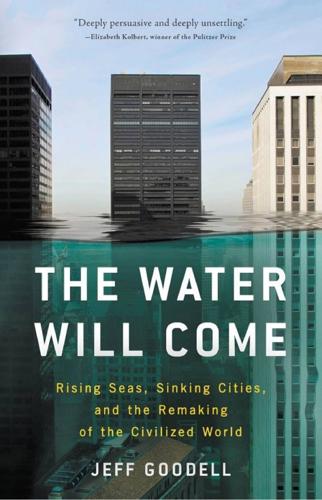
The Water Will Come: Rising Seas, Sinking Cities, and the Remaking of the Civilized World
by
Jeff Goodell
Published 23 Oct 2017
At the 2017 World Economic Forum in Davos, Switzerland, geoengineering was cited as one of the top risks that the world faces. And what Wood said ten years ago at that meeting remains true today—when you think about big technological fixes for sea-level rise, spraying particles in the atmosphere to reflect away sunlight is the only planetary-scale fix we know of that could plausibly stop or slow sea-level rise. Other ideas, such as pumping billions of tons of ocean water onto Antarctica, where it would freeze and lower sea levels, or re-creating an ice-age landscape (complete with genetically engineered beasts that would be a cross between elephants and woolly mammoths) in Siberia to help reflect sunlight and keep the tundra frozen, may be provocative thought experiments, but few scientists take them seriously.
…
Maybe in our increasingly rich and human-engineered world, losing some beaches and cities won’t matter so much. If the real Venice goes under, you can always visit the fake Venice in Las Vegas. And maybe Miami Beach will be nearly as awesome in virtual reality. (Then again, maybe not.) Perhaps the best we can hope for is that living in a world of quickly rising seas will turn out to be a planetary-scale experiment in creative destruction, one that forces us to abandon a lot of stupid infrastructure and stupid ideas about how to live with water—and how to live with each other—and replace them with something smarter, more durable, more flexible. After all, other than cockroaches, humans are probably the most adaptable creatures on the planet.
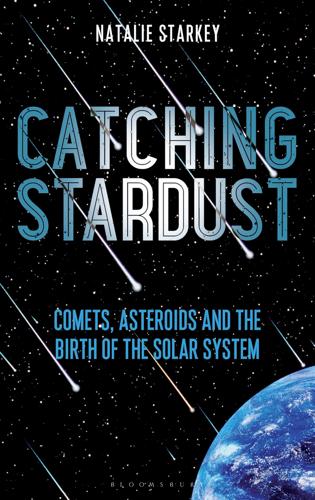
Catching Stardust: Comets, Asteroids and the Birth of the Solar System
by
Natalie Starkey
Published 8 Mar 2018
Studying the planets themselves is all well and good, but they tend to make things rather complicated when attempting to unravel the timeline that can take us back 4.6 billion years to the beginning of the Solar System, when the first rocks were forming from the molecular cloud. The reason for this is that the planets have experienced vast changes in their long history since formation. They have been melted and re-formed many times over, experiencing violent impacts from space and then undergoing planetary-scale processing such as plate tectonics, of which we’ll learn more later. In fact, because of these processes, the planets have almost completely hidden away or lost much of the information about the molecular cloud from which they formed. If scientists wanted to use the planets to understand the molecular cloud, then they’d have a great deal of geological unravelling to do.
…
Not only can asteroids and comets contain precious metals and water in high abundance, but these small objects can also be relatively easy to get to, with some being energetically closer than the Moon, requiring less rocket thrust to reach them. The relatively small size of comets and asteroids on planetary scales also gives them a low surface gravity which makes them easier to leave than the Moon, requiring less energy to blast back off their surfaces with a spacecraft laden with mined goodies. In addition, straightforward surface contact with some asteroids and comets may be enough to break them up, simply because they aren’t very well consolidated.
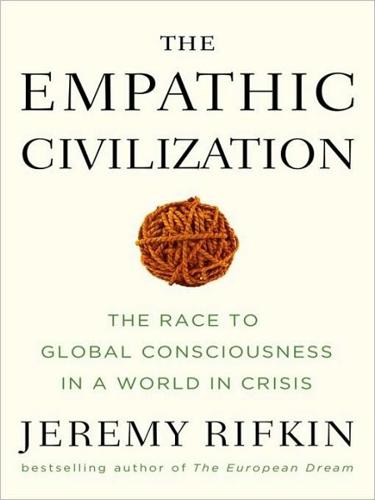
The Empathic Civilization: The Race to Global Consciousness in a World in Crisis
by
Jeremy Rifkin
Published 31 Dec 2009
Using instant electronic messages of 30 billion conversations among 180 million people all over the world, they corroborated the small world theory that only 6.6 degrees of separation exist between any two strangers on Earth.132 Horvitz, said: “To me, it was pretty shocking. What we’re seeing suggests there may be a social-connectivity constant for humanity.” The researchers concluded that “[t]o our knowledge, this is the first time a planetary-scale social network has been available to validate the well-known ‘6 degrees of separation’ finding by Travers and Milgram.”133 Researchers in the field of IT, communications, and social network theory are buoyed by the findings and suggest that the small world phenomenon could be harnessed to bring the human race together quickly around natural disaster relief or for political and social purposes.
…
Even here, the traditional top-down flow of communication so characteristic of the TV medium has bent to a high degree of interactivity and feedback. In popular reality TV shows like American Idol, the TV audience gets to weigh in by text message to help shape the direction and story line. The dramaturgical age is upon us. Moreno could never have imagined psychodrama on a planetary scale. Nor could the early theorists of dramaturgical consciousness have guessed that one day the dramaturgical frame of mind would come to be so thoroughly internalized and externalized that a generation of young people would come to think of themselves as actors playing roles during most of their waking hours.
…
While the new distributed communications technologies—and, soon, distributed renewable energies—are connecting the human race, what is so shocking is that no one has offered much of a reason as to why we ought to be connected. We talk breathlessly about access and inclusion in a global communications network but speak little of exactly why we want to communicate with one another on such a planetary scale. What’s sorely missing is an overarching reason for why billions of human beings should be increasingly connected. Toward what end? The only feeble explanations thus far offered are to share information, be entertained, advance commercial exchange, and speed the globalization of the economy. All the above, while relevant, nonetheless seem insufficient to justify why nearly seven billion human beings should be connected and mutually embedded in a globalized society.

The Moon: A History for the Future
by
Oliver Morton
Published 1 May 2019
It was chillingly illustrated with pictures of sleek missiles launching from craters on the Moon and of Queens and Manhattan under multiple mushroom clouds, all from the brush of Chesley Bonestell, a friend and collaborator of Richardson. The destruction wrought on the five boroughs deserved an artist used to the planetary scale; indeed, the pictures serve as companion pieces to one that Bonestell had painted the year before showing the aftermath of a meteor strike on New York. As the Moonpeople’s self-destruction through nuclear war in “Rocket Ship Galileo” made clear, the idea of the Moon as a source of mass destruction resonated with its long-standing fictional deployment as a landscape of deathliness, a place of extinction sometimes dotted with ruins.
…
It also stems from the same conflict as the bomb-test sediments favoured as a marker by others and matching, Mr Grinspoon says, their “symbolic potency”. Like them, it could only have been created by an entity that had “developed world-changing technology”. As Verne suggested in “From the Earth to the Moon”, the sort of technology that allows such travel is of its nature the sort of technology that is significant on a planetary scale. Grinspoon’s suggestion has the further benefit, at least to my eyes, that if Tranquility Base marks the bottom of the Anthropocene, then the Anthropocene is a geological epoch that encompasses both Earth and Moon. That seems at once odd and reasonable. If indelible human influence means the Earth has entered a new geological age, surely it means the Moon has, too.
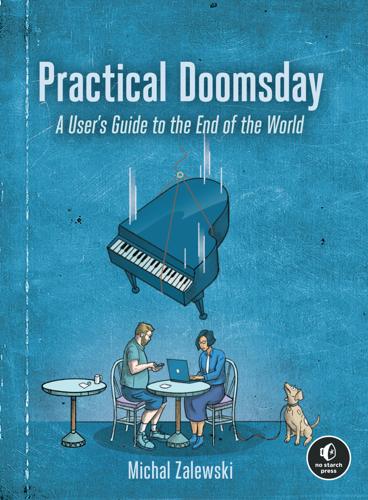
Practical Doomsday: A User's Guide to the End of the World
by
Michal Zalewski
Published 11 Jan 2022
Contents In Detail Title Page Copyright Dedication About the Author Preface Part I: Thinking About Risk Chapter 1: A Method to the Madness A Method for Reducing Complexity A Model for Quantifying Risk The Challenge of Crony Beliefs Chapter 2: The Specter of Humdrum Calamities Unemployment and Insolvency Loss of Shelter Loss of Basic Utilities or Transportation Unintentional Injury Theft, Harassment, and Intentional Harm Illness and Death But Wait, There’s More! Chapter 3: Exploring Large-Scale Risks Natural Disasters Industrial Accidents Social Unrest and War Economic Crises Pandemics Terrorism Chapter 4: Oh No, Zombies! Uniquely Virulent and Deadly Diseases Runaway Climate Change Other Planetary-Scale Natural Disasters Exotic Physics and Miscellaneous Space Phenomena Unimpeded Rise of Totalitarian Regimes Global Thermonuclear War Nuclear Electromagnetic Pulse Ghosts, Bigfoot, and the Coming Robot Apocalypse The Scourge of Extraterrestrials Looking Beyond Doomsday Part II: The Prepared Lifestyle Chapter 5: Mind Over Matter Chapter 6: Building a Rainy-Day Fund Finding Ways to Save Compartmentalizing the Funds Dealing with Debt Knowing Where to Stop Chapter 7: Safeguarding Your Savings The History of Currencies Debt as a Currency The Age of Coin Fractional Reserve Banking and Fiat Money Cryptocurrencies Revisiting Dangers to Liquidity and Capital Loss of Access to Bank Accounts Adverse Judgments Gradual Inflation Hyperinflation Confiscation of Wealth The (Monetary) Zombie Apocalypse Methods for Mitigating Risk Physical Cash Diversified Bank Deposits Bonds Simple Currency Hedges Equities Stock Options and Commodity Futures Options Precious Metals Real Estate Physical Collectibles Cryptocurrencies and NFTs Insurance Policies and Separation of Assets Portfolio Design Strategies Chapter 8: Engineering a Doomsday-Proof Career Chapter 9: Staying Alive Defensive Driving Working at Heights The Enemy in the Medicine Cabinet Alcohol and Recreational Drugs Workshop and Power Tool Safety Fireproofing the Homestead Other Dangers in and Around the Home Chapter 10: Protecting Oneself in the Digital and Physical Realm Dealing with Online Fraud Maintaining Privacy on the Internet Minimizing the Impact of Burglaries Responding to Muggings and Home Invasions Fending Off Pickpockets A Word on Kindness Chapter 11: Getting in Shape The Folly of Miracle Cures Establishing a “No Diet” Diet Calorie Restriction vs.
…
It’s difficult to predict the proxy wars that may be fought three decades from now, and it’s hard to tell which part of Wyoming will be experiencing more temperate winters and more rain, but a financial safety net and a robust social network are some of the surest ways to maintain the ability to adapt. Other Planetary-Scale Natural Disasters Tales of natural disasters are as old as oral tradition itself; many of our most ancient myths recount the floods, droughts, earthquakes, and locusts that haunted early humans, wiped out villages, or brought entire empires to their knees. In the 1960s, the venerable genre expanded to include hitherto unthinkable predictions of environmental crises brought on by people—be it overpopulation, pollution, or resource depletion.
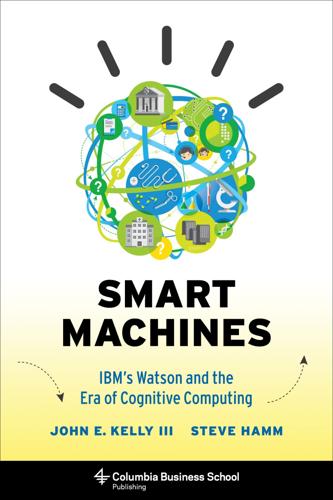
Smart Machines: IBM's Watson and the Era of Cognitive Computing (Columbia Business School Publishing)
by
John E. Kelly Iii
Published 23 Sep 2013
An especially intriguing target is helping people to understand the interactions of complex systems of systems that underlie everything from the human body to cities to the global financial industry. One thing seems certain: only through fundamental breakthroughs in physics will we be able to deal with so much complexity and uncertainty on a planetary scale. SCENARIO: DESIGNING PRODUCTS FROM THE MOLECULE UP In 1935, scientists at the E. I. DuPont Co. invented a synthetic fabric, later named nylon, that became the first commercially successful synthetic polymer. Nylon was first used as a replacement for silk in women’s stockings and parachutes but later came to be employed much more broadly in everything from clothing to gears in machines.
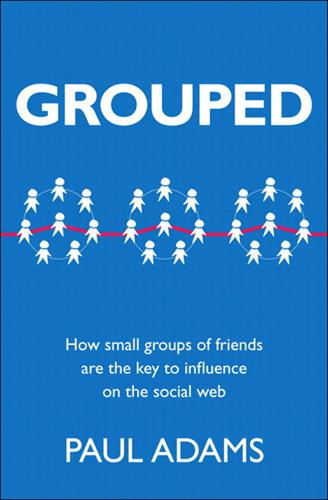
Grouped: How Small Groups of Friends Are the Key to Influence on the Social Web
by
Paul Adams
Published 1 Nov 2011
For lots of detail about group dynamics, see David Brook’s book The Social Animal: The Hidden Sources of Love, Character, and Achievement (Random House, 2011). 7. For more information on Stanley Milgram’s experiments, including challenges to his methods, see the Wikipedia article on Small world experiment. 8. See the 2008 research paper “Planetary-scale views on a large instant-messaging network” by Jure Leskovec and Eric Horvitz (where they analyzed 30 billion conversations among 240 million MSN users). 9. Quote from Stanley Milgram’s 1967 Psychology Today article “The small-world problem.” 10. In his book Six Degrees: The Science of a Connected Age (Norton, 2003), Duncan Watts describes the difficulties in finding the shortest paths between people. 11.

24/7: Late Capitalism and the Ends of Sleep
by
Jonathan Crary
Published 3 Jun 2013
In Stiegler’s view, hopes for such developments were based on a misunderstanding of what was driving many processes of globalization. For him, the 1990s opened onto a hyper-industrial era, not a post-industrial one, in which a logic of mass production was suddenly aligned with techniques that, in unprecedented ways, combine fabrication, distribution, and subjectivation on a planetary scale. While much of Stiegler’s argument is compelling, I believe that the problem of “temporal objects” is secondary to the larger systemic colonization of individual experience that I have been discussing. Most important now is not the capture of attentiveness by a delimited object—a movie, television program, or piece of music—whose mass reception seems to be Stiegler’s main preoccupation, but rather the remaking of attention into repetitive operations and responses that always overlap with acts of looking or listening.

Skyfaring: A Journey With a Pilot
by
Mark Vanhoenacker
Published 1 Jun 2015
I am certain that on most workdays I see more people than many of my ancestors saw in an entire lifetime. I think how those I’ve seen have been scattered by the hours of airplanes, how the simplest definition of community, of sharing a space, has been disassembled, even as the plane has enabled new forms of reunions, those that take place on a fully planetary scale. By nightfall many of the people I saw in the airport or onboard my plane will have taken further flights, or will be at home, or in a hotel room like mine. Some may be driving the last miles down a narrow road, completing their journey to a place distant in every sense from the world I know, or may even now be describing their journey to the person they’ve traveled so far to see.
…
But when I drove to them myself, the cloud they formed began to sort itself, to fall into place, as we say, like the pieces of a wooden puzzle. I realized that a lake I thought faced in one direction actually faced another, for example, and was close to a second location that I had never linked it to. When I learned to fly, such a sorting of idea-places onto the physical world around me happened on a fully planetary scale. What suddenly appeared in the window included not only the few cities I had flown to as a child, but everything I saw from the air that was identifiable—all the cities and mountains and oceans I had heard of or read about and dreamed of someday visiting. This sense of a formal knowledge of places falling onto actual earth and lining and connecting up, one with another, may be similar to the ways in which bodies change in the minds of medical students when they first learn how the organs and bones they’ve always known the names of are really located in three dimensions, and how they’re connected by other tissues they did not know about before medical school.

Smart Mobs: The Next Social Revolution
by
Howard Rheingold
Published 24 Dec 2011
I got back to Apple and started building prototypes.”20 What emerged was a proposed infrastructure called WorldBoard. In 1996, Spohrer wrote: What if we could put information in places? More precisely, what if we could associate information with a place and perceived the information as if it were really there? WorldBoard is a vision of doing just that on a planetary scale and as a natural part of everyday life. For example, imagine being able to enter an airport and see a virtual red carpet leading you right to your gate, look at the ground and see property lines or underground buried cables, walk along a nature trail and see virtual signs near plants and rocks.21 Spohrer raised the bar for technical difficulty by wanting to see the information in its context, overlaid on the real world.
…
That transmitted information could be spatial coordinates for projecting a virtual overlay onto an object in space, or an animation, text, music, spreadsheet, or voice message. The client software that runs on users’ devices would include “a mobile capability to author and access the information associated with places on a planetary scale. A location-aware device with navigation, authoring, and global wireless communication capabilities would be needed.”26 When I started looking for similar research, I found it everywhere. In 2001, researchers at the Social Mobile Computing Group in Kista, Sweden, presented their GeoNotes system, which enables people to annotate physical locations with virtual notes, to add signatures, and to specify access rights.27 Jun Rekimoto and his colleagues at Sony described in 1998 “a system that allows users to dynamically attach newly created digital information such as voice notes or photographs to the physical environment, through mobile/wearable computers as well as normal computers. . . .

Radical Technologies: The Design of Everyday Life
by
Adam Greenfield
Published 29 May 2017
Much of the technology yoked together in Amazon’s effort seems to have originated internally, to the extent that aspects of the program were apparently overseen personally by Bezos himself.12 Other than that this is an unusual degree of interest for a CEO to take in the details of implementation, in this respect the company is no different from the other Stacks: all of them spend billions of dollars annually generating, testing and refining new ideas, and trying to turn them into shipping products. But the Stacks also innovate by acquisition, turning the entire planetary-scale entrepreneurial community into a vast distributed R&D lab. For example, Amazon apparently developed the foundations of its drone program in-house, but when it became evident that nobody on hand had the expertise in machine vision necessary to advance the program to its next stage, they simply hired an existing team of experts, and rebuilt the drone lab around them.13 Similarly, they got a toehold in automation by buying the company that made the robots used in its warehouses, Kiva Systems.14 While this practice is commonplace throughout the technology industry, it has been raised to an art in the age of the Stacks, especially as each of them expands beyond its original core competency.
…
But the random outbreaks of terror have for the most part been suppressed; some kind of corrective action is being taken on the environment, however obscure it may be; and if a brutal conformity reigns, it leaves just enough space for people to eke out the rudiments of a life they can call their own. Most choose to make of it whatever they can. The final scenario has no name. Here we find failed civilization, on a planetary scale: societies panicking in the face of the first sharp shocks of climate violence collapse back into tribal allegiances and pseudoverities of blood and soil, and never meaningfully grasp any of the possibilities presented to them by new technology. The landscape is scoured and blasted by desperate attempts to jumpstart the engines of the economy.
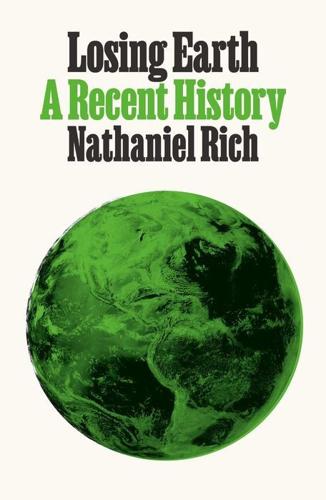
Losing Earth: A Recent History
by
Nathaniel Rich
Published 4 Aug 2018
The anthropologist Margaret Mead, who knew something about the rigidity of cultural patterns, had understood the urgency of the problem even earlier, in 1975, when she convened a global warming symposium at the National Institute of Environmental Health Sciences. “We are facing a period when society must make decisions on a planetary scale,” she wrote. Her conclusions were stark, immediate, and unadorned with the caveats that dominated the academic literature. “Unless the peoples of the world can begin to understand the immense and long-term consequences of what appear to be small immediate choices,” she said, “the whole planet may become endangered.”

What Technology Wants
by
Kevin Kelly
Published 14 Jul 2010
The only way to reconstruct a viable human species of mind is to use tissue and cells—and why bother when making human babies is so easy? Some problems will require multiple kinds of minds to crack, and our job will be to discover new methods of thinking and to set this diversity of intelligences loose in the universe. Planetary-scale problems will require some kind of planetary-scale mind; complex networks made of trillions of active nodes will require network intelligences; routine mechanical operations will need nonhuman precision in calculations. Since our own brains are such poor thinkers in terms of probability, we’d really benefit by discovering an intelligence at ease with statistics.

Ways of Being: Beyond Human Intelligence
by
James Bridle
Published 6 Apr 2022
I just hadn’t understood what they meant. The achievement of The Overstory is to make these revelations meaningful at human scale, building the connections between us and the trees around us. Powers uses the scale of arboreal life – its extent in time, as well as its size – to tell a new kind of epic story: multi-generational, planetary-scale and ecological, in the sense of deeply intertwined with and responsible to our environment. As I read it, I felt something shift in myself, a sense of having been blind all my life to events and processes, whole other lives that surround us all the time. Having always been more interested in words on pages and code on screens, I suddenly found myself leaning out of windows to touch the leaves of nearby trees, and stopping in the street to trace, with wonder, the whorls and cracks of living bark.
…
Of course it all comes shimmering, bumping and concertina-ing down the aeons. Gaia theory understands the world as a synergistic, self-regulating, complex system in which organic and inorganic matter interact with one another to co-produce the conditions for life on Earth. Gaia is a cybernetic feedback system, the realization of Beer’s Cybernetic Factory at planetary scale, in which the inputs and outputs are water, air and rock, and the U-Machine is the entire biosphere huffing and puffing and wriggling and growing and adapting away. The world is not like a computer; computers are like the world. This realization opens the door to all kinds of exciting and radically different possibilities for computation, which Beer barely anticipated but would probably have massively enjoyed.
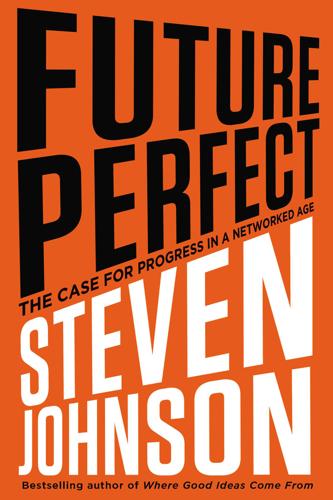
Future Perfect: The Case for Progress in a Networked Age
by
Steven Johnson
Published 14 Jul 2012
No single agency controlled it absolutely; everyone controlled it partially. Decentralization, peer-to-peer networks, gateways, platform stacks—the principles that Baran, Davies, Cerf, Kahn, and others hit upon together in the 1960s and 1970s provided a brilliant solution to the problem of sharing information on a planetary scale. Tellingly, the solution ultimately outperformed any rival approaches developed by the marketplace. Billions of dollars were spent by private companies trying to build global networks based on proprietary standards: AOL, CompuServe, Prodigy, Microsoft, Apple, and many others made epic efforts to become mainstream consumer networks in the late 1980s and early 1990s.
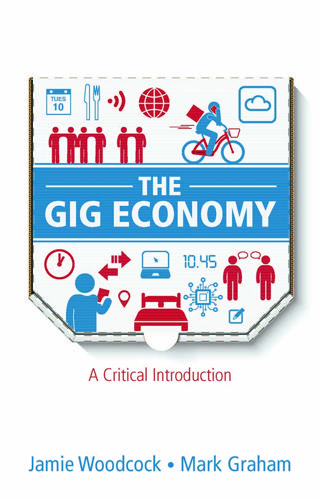
The Gig Economy: A Critical Introduction
by
Jamie Woodcock
and
Mark Graham
Published 17 Jan 2020
Workers writing essays, doing ‘lead generation’, designing presentations, building websites, working as personal assistants, and carrying out all manner of other jobs all get their work through online freelancing platforms that allow workers and clients to connect in a planetary labour market (Graham and Anwar, 2019). For many workers, the planetary scale of the market affords workers a significant amount of freedom in choosing where to work from, and in many cases allows them to escape from relatively constrained local labour markets. There are workers in places like Manila in the Philippines or Lagos in Nigeria who simply want an escape from the horrendous local traffic conditions (it is not uncommon to hear stories of three-hour commutes to work in both places).
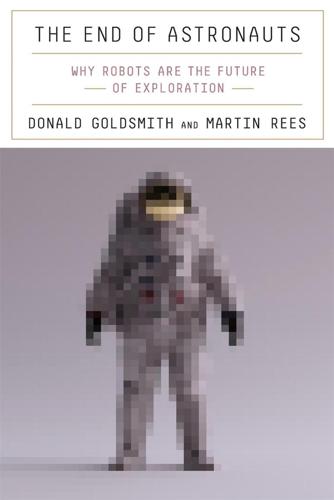
The End of Astronauts: Why Robots Are the Future of Exploration
by
Donald Goldsmith
and
Martin Rees
Published 18 Apr 2022
The next stage on this front should come from the European Space Agency’s Jupiter Icy Moons Explorer (JUICE) mission, scheduled for launch in mid-2022.18 TERRAFORMING MARS By the end of this century, a technologically reasonable projection foresees a human settlement on Mars, analogous in structure and functions to our current installation at the South Pole, though operating under much harsher circumstances. Some enthusiasts regard this as a preliminary stage in a grand, planetary-scale project to turn Mars into a planet more hospitable to human habitation, potentially capable of supporting a population equal to Earth’s. Although Mars has barely more than half the Earth’s diameter, its lack of oceans gives the red planet a total land area almost equal to Earth’s, so some may claim that the planet offers equal potential for maintaining a human population.
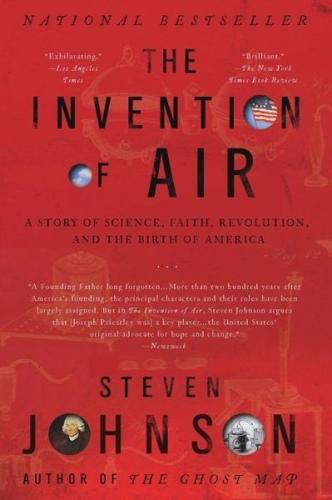
The Invention of Air: A Story of Science, Faith, Revolution, and the Birth of America
by
Steven Johnson
Published 26 Dec 2008
Each works, in the language of the original Gaia paper, as “a contrivance specifically constituted for a set of purposes.” The cells that help pump blood through our bodies go to elaborate lengths to keep blood-pressure levels at an equilibrium, because stable blood pressure is important to the survival of the organism. Lovelock and Margulis saw the same principle at work on a planetary scale: the Earth itself could be seen as a single organism, with the collective behavior of every member of the biosphere contributing to its survival. It was a variation on Sir John Pringle’s “no vegetable grows in vain” homily, with mankind replaced by Mother Earth. The biosphere regulates O2 levels, and it does it for a reason: because stable O2 levels are good for the biosphere.
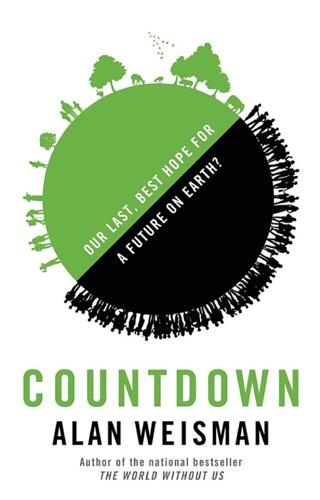
Countdown: Our Last, Best Hope for a Future on Earth?
by
Alan Weisman
Published 23 Sep 2013
In recent years, Bartlett has raised some controversy by proposing an end to immigration before the United States is engulfed with humanity. But even critics who challenge the ethical, practical, social, and environmental complexity of such a measure don’t argue with his math—especially when the scale gets so big that we lose sight of what’s happening to us. The planetary scale, for instance. In 1900, there were 1.6 billion people on Earth. Then, during the twentieth century, the world’s population doubled, and then doubled again. How much space did that leave in our bottle? How can we tell if, in fact, we’ve already filled it up? The shuttles have stopped flying from Cape Canaveral.
…
A passage in the landmark ecological boundary paper he coauthored referred to exponential growth of human activities that could destabilize systems and trigger abrupt, irreversible environmental changes that could be catastrophic for human well-being. “This is a profound dilemma,” it concluded, “because the predominant paradigm of social and economic development remains largely oblivious to the risk of human induced environmental disasters at continental to planetary scales.” Muffled in the neutral scientific tone of that turgid sentence was a scream: We don’t even realize what we’re doing! As Interstate 94 curved past gleaming downtown Minneapolis, I looked for the parking lot where the original Minneapolis Public Library once stood, a nineteenth-century brownstone where I’d passed much of my boyhood.

The Climate Book: The Facts and the Solutions
by
Greta Thunberg
Published 14 Feb 2023
Having instead chosen to ignore those warnings and let emissions continue to grow, stockpiling each year in the atmosphere a generational burden, the world now faces a far more harrowing task – zeroing out emissions within just a few decades, perhaps even sooner in the absence of negative emissions and carbon removal on a ‘planetary scale’. What seemed advisable in 1988 now qualifies almost as climate denial; what counted as ambitious in 2008 is already hopelessly inadequate. And if the curves aren’t bent immediately, by 2025 even the dispiriting maths we face today will no longer be workable either. The second lesson is that success in one country is not enough, and that no one should be satisfied by nationalistic responses to global threats.
…
The task of racial justice and climate justice depends on our meeting this challenge at the scale it requires: remaking the world. This is no metaphor. As the activists who challenged the colonial political system in the 1960s and ’70s realized, justice requires us to reconstruct our political and economic systems on a planetary scale. Political theorist Adom Getachew has called this ethos and ambition ‘worldmaking’. This may seem daunting, for the world is a complex thing made of many moving parts – but it is a real system that we can, and must, try to understand. It’s often poorly described with the static metaphor of a ‘blueprint’, or a chart of institutional hierarchies, while in reality our politics and economics are in constant motion.
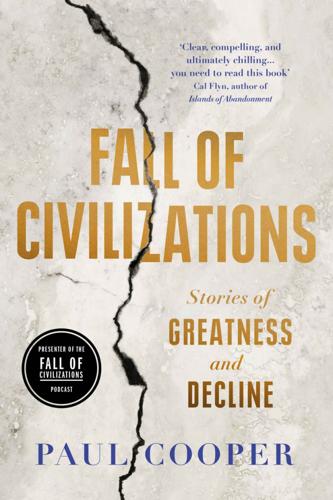
Fall of Civilizations: Stories of Greatness and Decline
by
Paul Cooper
Published 31 Mar 2024
Tree rings are wider in periods of heavy rainfall, and thinner in years of low rainfall — and the study shows that after around 1350, monsoon rainfall in South East Asia became incredibly variable. A twenty-five-year period of severe droughts occurred from 1330 to 1375, and again from 1400 to 1425. Between these extreme dry periods, the rain fell in a deluge. ‘On a planetary scale, the climate was fluctuating far more intensely in the period from the mid-fourteenth to the early-mid-sixteenth century,’ writes the historian Roland Fletcher. By the thirteenth century … the infrastructure of Greater Angkor was huge, ageing and intractable. Some parts of the water network were between 300 and 500 years old.
…
It was once feared that the earth’s population would exceed the planet’s ability to provide food in the twentieth century — but the ‘Green Revolution’ in agricultural technology saw food production continue to outpace population growth, averting disaster. It is not inconceivable that a new revolution in energy production or moonshot technologies like planetary-scale carbon capture or orbital mirrors might avert our predicament, but these technologies still belong to the world of the future and are nowhere near implementation. As Wile E. Coyote always finds out in the end, you cannot keep running over the cliff forever. Eventually, you will have to look down.
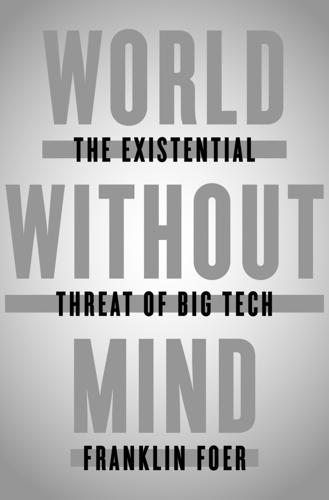
World Without Mind: The Existential Threat of Big Tech
by
Franklin Foer
Published 31 Aug 2017
“The alphabet is a technology of visual fragmentation and specialization,” he lamented. It produced a “desert of classified data.” His critique was actually a lament—he longed for the world before print, for oral culture, with its face-to-face interactions. The perfect technology would revive the spirit of that bygone culture, but on a planetary scale, transforming the world into one big, happy tribe. Or, it would become a “global village,” to use his other cliché-destined phrase—and the warmth of that village would counteract destructive individualism and all the other fragmentary forces in the world. Most promising of all the new technologies was the computer.

The Secret War Between Downloading and Uploading: Tales of the Computer as Culture Machine
by
Peter Lunenfeld
Published 31 Mar 2011
The right-hand circle shows what has happened, in Mau’s view, since the advent of nanotechnologies, genetic manipulation, large-scale digital fabrication, and even terraforming. Design expands to become the outermost ring, encompassing nature, culture, and business. From Mau’s perspective, humankind’s increasing capacities to manipulate and shape everything from the submolecular to planetary scales radically transforms what design means and signifies— in his words, that design itself “has become the biggest project of all.”8 Mieke Gerritzen, a Dutch visual provocateur, went so far as to proclaim that “Everyone Is a Designer!” in a book she designed by the same name.9 Whether we accept the hyperbole of her manifesto or not, there is much to be gained from at least thinking like a designer in this 89/11 world.

The Techno-Human Condition
by
Braden R. Allenby
and
Daniel R. Sarewitz
Published 15 Feb 2011
Nor will technology, reaching down its empathic paw, raise us from the trials and tribulations of being human. Rather, what will happen is what has already been happening: the two will continue to merge and re-make one another on the individual scale, on the institutional scale, on the social scale, on the planetary scale. Printing presses and books created a new kind of religious scholar; the Internet and Google create a new kind of student. Such changes may be profound. New human varietals will continue to emerge-indeed, "digital natives," comfortably embedded in their leT networks, may already exemplify this evolution.
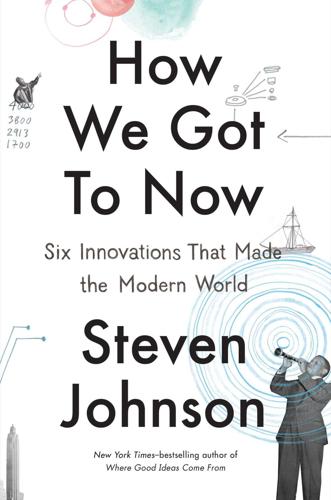
How We Got to Now: Six Innovations That Made the Modern World
by
Steven Johnson
Published 28 Sep 2014
This is long-zoom history: almost a century after Willis Carrier began thinking about keeping the ink from smearing in Brooklyn, our ability to manipulate tiny molecules of air and moisture helped transform the geography of American politics. But the rise of the Sun Belt in the United States was just a dress rehearsal for what is now happening on a planetary scale. All around the world, the fastest growing megacities are predominantly in tropical climates: Chennai, Bangkok, Manila, Jakarta, Karachi, Lagos, Dubai, Rio de Janeiro. Demographers predict that these hot cities will have more than a billion new residents by 2025. It goes without saying that many of these new immigrants don’t have air-conditioning in their homes, at least not yet, and it is an open question whether these cities are sustainable in the long run, particularly those based in desert climates.
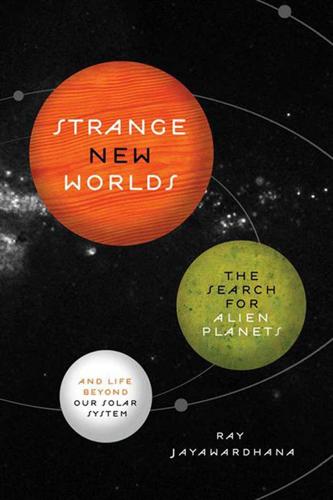
Strange New Worlds: The Search for Alien Planets and Life Beyond Our Solar System
by
Ray Jayawardhana
Published 3 Feb 2011
Other, smaller pieces are faint, except when one occasionally burns up in the Earth’s atmosphere or comes close enough to the Sun to evaporate its frozen gases into an enormous tail. It is pretty clear by now that the Earth is special among its brethren in the solar system as the only planet with liquid water on its surface and life on a planetary scale. But there’s no reason to think that our solar system is unique in the Galaxy, given its hundreds of billions of stars. Unfolding Story In fact, well before they could detect extrasolar worlds, astronomers had a pretty good idea that the stuff of planets is ubiquitous. Thanks to clues from observations, laboratory studies, and computer simulations, we now have a reasonable, albeit incomplete, understanding of how the raw material comes together to make planetary systems.

Humankind: Solidarity With Non-Human People
by
Timothy Morton
Published 14 Oct 2017
What is being sustained, of course, is the neoliberal, capitalist world-economic structure. And this isn’t great news for humans, coral, kiwi birds or lichen. This adds up to an explosively holist political and economic agenda. Individual beings don’t matter; what matters is the whole that transcends them. We require another holism if we are going to think at a planetary scale without just upgrading or retweeting the basic agricultural theological meme, a meme that justifies a human–nonhuman boundary. Fascism is an atavistic reaction to the reality of this oppressive failure, attempting to replace the new god with a fantasy old god, “Making America Great Again.” The fusion in the fascist imaginary of Agenda 21 with the New World Order results, as in geometrical triangulation, in a virtual image of an international (Jewish) banking conspiracy.
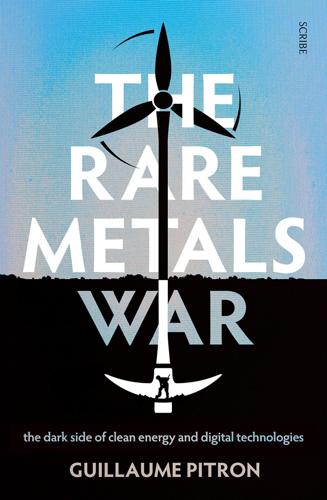
The Rare Metals War
by
Guillaume Pitron
Published 15 Feb 2020
Two centuries later, we want to apply the British example to the energy and digital revolution. To secure rare metals supplies, mining maps need to be updated — a realisation brought on by the Chinese embargo that led to states, multinationals, and entrepreneurs scrambling for rare metals. This is being undertaken not only at a national scale, as in Smith’s time, but on a planetary scale: deposits of rare earths have been discovered in at least thirty-five countries on five continents. North Korea has some of the most abundant rare earths deposits in the world. In Brazil, President Jair Bolsonaro wants to accelerate the production of niobium — a metal of which Brazil already produces 90 per cent.30 In the midst of the US–China trade war, Australia is multiplying its mining projects in Western Australia because, in the words of the country’s minister of defence, Linda Reynolds, ‘It is essential we have a secure source of supply, especially given the current geopolitical headwinds.’31 Bill Gates, for his part, has even invested in KoBold Metals — a Californian start-up that promises big data solutions for new cobalt exploration campaigns.32 Mining companies have already started exploring the hundreds of rare metals deposits around the world.

Thank You for Being Late: An Optimist's Guide to Thriving in the Age of Accelerations
by
Thomas L. Friedman
Published 22 Nov 2016
It is difficult to overestimate the scale and speed of change. In little over two generations—or a single lifetime—humanity (or until very recently a small fraction of it) has become a planetary-scale geological force. Hitherto human activities were insignificant compared with the biophysical Earth System, and the two could operate independently. However, it is now impossible to view one as separate from the other. The Great Acceleration trends provide a dynamic view of the emergent, planetary-scale coupling, via globalization, between the socio-economic system and the biophysical Earth System. We have reached a point where many biophysical indicators have clearly moved beyond the bounds of Holocene variability.
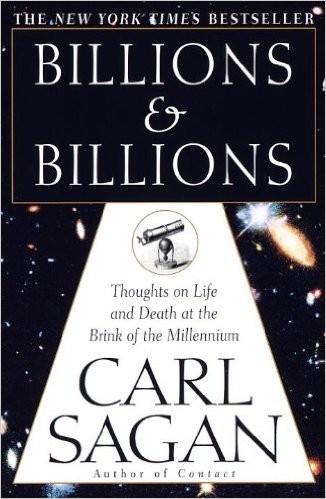
Billions & Billions: Thoughts on Life and Death at the Brink of the Millennium
by
Carl Sagan
Published 11 May 1998
But as time went on, as technology improved, our numbers increased exponentially, and now here we are with an average of some ten people per square kilometer, our numbers concentrated in cities, and an awesome technological armory at hand—the powers of which we understand and control only incompletely. ** Because our lives depend on minuscule amounts of such gases as ozone, major environmental disruption can be brought about—even on a planetary scale—by the engines of industry. The inhibitions placed on the irresponsible use of technology are weak, often half-hearted, and almost always, worldwide, subordinated to short-term national or corporate interest. We are now able, intentionally or inadvertently, to alter the global environment. Just how far along we are in working the various prophesied planetary catastrophes is still a matter of scholarly debate.

Revolution at Point Zero: Housework, Reproduction, and Feminist Struggle
by
Silvia Federici
Published 4 Oct 2012
The NIDL is thus identified with the formation of Free Trade Zones—industrial sites exempt from any labor regulation producing for export—and with the organization of “global assembly lines” by transnational corporations.5 Relying on this theory, both the media and economic planners have relaunched the myth of capitalism as the great equalizer and promoter of “interconnectedness,” this time presumably achieved on a planetary scale. As the argument goes, we are witnessing the industrialization of the “Third World.” We are told this process will both eliminate the hierarchies that have historically characterized the international division of labor, and will also have a positive impact on the sexual division of labor. The women working in the Free Trade Zones presumably benefit from engagement in industrial labor, gaining a new independence and the skills necessary to compete on the international labor market.6 Although accepted by neoliberal economists,7 this theory has not been exempt from criticism.8 Already in The New Helots (1987), Robin Cohen observed that the movement of capital from the “North” to the “South” is not quantitatively sufficient to justify the hypothesis of a “New” International Division of Labor.
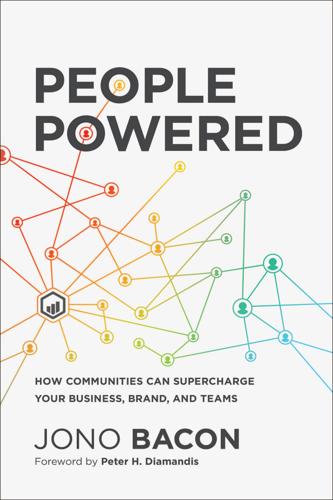
People Powered: How Communities Can Supercharge Your Business, Brand, and Teams
by
Jono Bacon
Published 12 Nov 2019
Jono looks at those networks of human brains through many insightful angles, from animal behaviors to the very human need of belonging and connecting to something bigger than yourself. —Giorgio Regni, Chief Technical Officer, Scality What makes us unique as a species is that we seem to have an infinite ability to collaborate, from hundreds to millions of people. Collaboration, I believe, is the key to our ability as a species to solve planetary-scale challenges. People Powered provides a roadmap for us to further unlock our potential as individuals, to scale collaboration, and to increase our own personal impact. —Ryan Bethencourt, CEO, Wild Earth; Partner, Babel Ventures Copyright © 2019 by Jonathan Bacon All rights reserved. No portion of this book may be used or reproduced, stored in a retrieval system, or transmitted in any form or by any means—electronic, mechanical, photocopy, recording, scanning, or other—except for brief quotations in critical reviews or articles, without the prior written permission of the publisher.
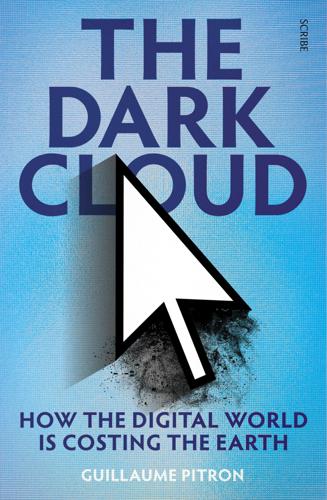
The Dark Cloud: How the Digital World Is Costing the Earth
by
Guillaume Pitron
Published 14 Jun 2023
We could also see it as a ‘butterfly effect of materials’. Just as a butterfly flapping its wings can cause a storm at the other end of the world, making a simple item of clothing can have an impact on all stages of its production, scattered across the globe. The MIPS method exposes a causal chain on a planetary scale. It is translated into a number — an ‘ecological rucksack’ — which is the multiplying factor of every one of our acts of consumption. The method is not perfect: ‘Most of the data used for calculating MIPS is based on experts’ opinions and estimates’, and are often inaccurate, Teubler points out.

The Locavore's Dilemma
by
Pierre Desrochers
and
Hiroko Shimizu
Published 29 May 2012
As Aristotle observed more than two millennia ago: “Sometimes there is much drought or rain, and it prevails over a great and continuous stretch of country. At other times it is local; the surrounding country often getting seasonable or even excessive rains while there is drought in a certain part; or, contrariwise, all the surrounding country gets little or even no rain while a certain part gets rain in abundance.” 20 This is even more so on a planetary scale. Of course, the state of transportation and information technologies at any given point in time was also crucial in moving goods around in the right amounts and at the right time. Historically, regions that could rely on maritime transportation always had a clear advantage over landlocked ones.

Bureaucracy
by
David Graeber
Published 3 Feb 2015
Within a matter of two or three years, we had sunk pretty much every proposed new global trade pact, and institutions like the IMF had been effectively expelled from Asia, Latin America, and, indeed, most of the world’s surface.28 The imagery worked because it showed everything people had been told about globalization to be a lie. This was not some natural process of peaceful trade, made possible by new technologies. What was being talked about in terms of “free trade” and the “free market” really entailed the self-conscious completion of the world’s first effective29 planetary-scale administrative bureaucratic system. The foundations for the system had been laid in the 1940s, but it was only with the waning of the Cold War that they became truly effective. In the process, they came to be made up—like most other bureaucratic systems being created on a smaller scale at the same time—of such a thorough entanglement of public and private elements that it was often quite impossible to pull them apart—even conceptually.
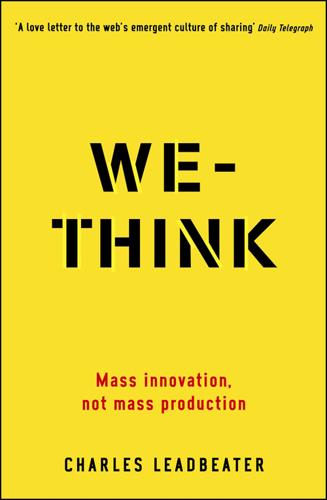
We-Think: Mass Innovation, Not Mass Production
by
Charles Leadbeater
Published 9 Dec 2010
As the Canadian catastrophe theorist Thomas Homer-Dixon puts it in The Upside of Down, In one respect humanity is extraordinarily lucky: just when it faces some of the biggest challenges in its history, it has developed a technology that could be the foundation for extremely rapid problem-solving on a planetary scale, for radically new forms of democratic decision-making. We have only just begun to tap the web’s potential and the new ways of thinking and acting it offers us. We-Think will really make a difference when we use it creatively to tackle major shared challenges: to spread democracy and learning, to improve health and quality of life, to tackle climate change and the threats of extremism.

Covid-19: The Pandemic That Never Should Have Happened and How to Stop the Next One
by
Debora MacKenzie
Published 13 Jul 2020
But is the answer to make unemployment in Bangladesh permanent by bringing those clothing factories “home” or to shut down the amicable global trade links between great powers that have fostered the longest stretch of relative peace the world has ever known? If Covid-19 teaches us anything, it is that we really are all in this together. Some people in the anti-globalist, or just plain nationalist camp strongly believe we should not be organizing ourselves on a planetary scale at all. Yet, given that virtually all our economic and cultural activity is now on that scale, it is hard to argue we should not also be managing our affairs on that level. Just having eight billion people filling virtually every available niche on this planet makes us global whether we like it or not.

The Strange Order of Things: The Biological Roots of Culture
by
Antonio Damasio
Published 6 Feb 2018
This could be the best of times to be alive because we are awash in spectacular scientific discoveries and in technical brilliance that make life ever more comfortable and convenient; because the amount of available knowledge and the ease of access to that knowledge are at an all-time high and so is human interconnectedness at a planetary scale, as measured by actual travel, electronic communication, and international agreements for all sorts of cooperation, in science, the arts, and trade; because the ability to diagnose, manage, and even cure diseases continues to expand and longevity continues to extend so remarkably that human beings born after the year 2000 are likely to live, hopefully well, to an average of at least a hundred.
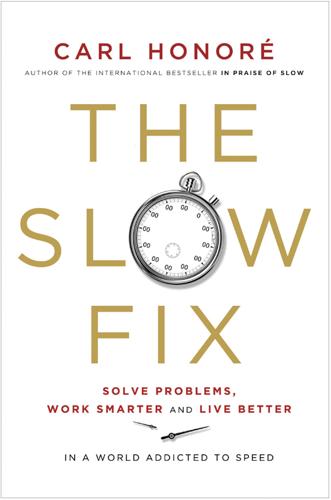
The Slow Fix: Solve Problems, Work Smarter, and Live Better in a World Addicted to Speed
by
Carl Honore
Published 29 Jan 2013
Though it uses the same tropes that keep Mabinogi players glued to their seats for days on end – cool graphics, missions, rewards, levels, feedback – EVOKE is designed to minimise time on the keyboard. On average, its players spend five to six hours pursuing missions in the real world for every hour spent in front of a screen. “We’re trying to take ordinary people who feel like they don’t have a positive role to play in big planetary-scale efforts and give them the sense that they can as individuals contribute to changing the world for the better,” says McGonigal. But EVOKE is also an exercise in unearthing the diamonds in the rough, the John Harrisons of social enterprise. The best players are rewarded with grant money and mentorships with social innovators.
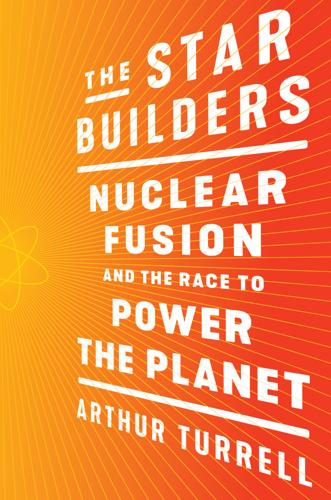
The Star Builders: Nuclear Fusion and the Race to Power the Planet
by
Arthur Turrell
Published 2 Aug 2021
Apart from this approach to fusion-powered space travel posing significant proliferation and safety risks, tests of pulsed nuclear explosion rockets are effectively banned by international treaties—so it seems much more sensible to use controlled fusion reactors to achieve similar ends. However fusion-powered rockets are ultimately achieved, research into fusion for energy will aid their development.14 Anyway, developing fusion propulsion isn’t just about exploring the universe; fusion rockets could also help us prevent planetary-scale extinction of life from happening in the first place. The major challenge in preventing a humanity-killing asteroid or comet is detecting and reaching it early enough so that mitigating action—such as steering it out of the way—can be taken. Giving an asteroid a small push early on is as effective as a big push later on.
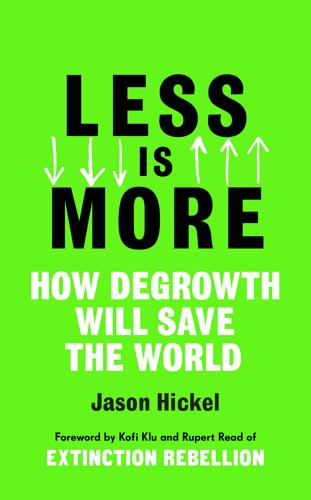
Less Is More: How Degrowth Will Save the World
by
Jason Hickel
Published 12 Aug 2020
We know, for example, that certain societies played a role in the demise of some of the planet’s ancient megafauna, like woolly mammoths and giant sloths and sabre-toothed cats. But they never precipitated anything like the multi-front ecological collapse that we are witnessing today. It was only with the rise of capitalism over the past few hundred years, and the breathtaking acceleration of industrialisation from the 1950s, that on a planetary scale things began to tip out of balance. Once we understand this, it changes how we think about the problem. We call this human epoch the Anthropocene, but in fact this crisis has nothing to do with humans as such. It has to do with the dominance of a particular economic system: one that is recent in origin, which developed in particular places at a particular time in history, and which has not been adopted to the same extent by all societies.

Cloudmoney: Cash, Cards, Crypto, and the War for Our Wallets
by
Brett Scott
Published 4 Jul 2022
The fight to lock people into dependence on these systems is becoming a geopolitical struggle between major powers, supported by their corporate allies. On first look, individual corporates and governments would appear to be competing for dominance, but closer consideration reveals that they are elbowing each other for position within a growing planetary-scale super-system. It’s difficult to glimpse this super-system in its entirety, partly because it is too large to see. But our routine interactions with a constellation of phones, computers and sensors (all of which route information to faraway datacentres) leave an imprint on us, translating into an uncomfortable sense of living in a world destined to move towards ever greater levels of concentrated interconnection.
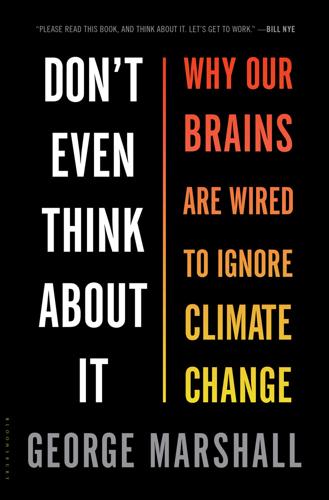
Don't Even Think About It: Why Our Brains Are Wired to Ignore Climate Change
by
George Marshall
Published 18 Aug 2014
This inspiring vision conveniently ignores the billions of people who find life quite tough enough already and for whom “one more obstacle” could destroy their lives. However, the narrative of technological solutions and elitist control that permeates bright-siding can all too readily embrace a darker vision of the future in which vast planetary-scale engineering solutions (usually known as geo-engineering, or more chillingly, climate remediation) remove carbon from the atmosphere or reflect sunlight away from the earth. These technologies are fascinating to entrepreneurial billionaires such as Niklas Zennström, cofounder of Skype, and Bill Gates, who is described by Fortune as “the world’s leading funder of research into geoengineering.”

The Rise of the Network Society
by
Manuel Castells
Published 31 Aug 1996
A global economy is an historically new reality, distinct from a world economy.55 A world economy – that is, an economy in which capital accumulation proceeds throughout the world – has existed in the West at least since the sixteenth century, as Fernand Braudel and Immanuel Wallerstein have taught us.56 A global economy is something different: it is an economy with the capacity to work as a unit in real time, or chosen time, on a planetary scale. While capitalism is characterized by its relentless expansion, always trying to overcome limits of time and space, it was only in the late twentieth century that the world economy was able to become truly global on the basis of the new infrastructure provided by information and communication technologies, and with the decisive help of deregulation and liberalization policies implemented by governments and international institutions.
…
It is through these globalized, strategic components of the economy that the economic system is globally interconnected. Thus, I will define more precisely the global economy as an economy whose core components have the institutional, organizational, and technological capacity to work as a unit in real time, or in chosen time, on a planetary scale. I shall review succinctly the key features of this globality. Table 2.6 Cross-border transactions in bonds and equities, 1970–1996 (percentage of GDP) Source: IMF (1997: 60), compiled by Held et al. (1999: table 4.16) a January–September. b 1982. Global financial markets Capital markets are globally interdependent, and this is not a small matter in a capitalist economy.57 Capital is managed around the clock in globally integrated financial markets working in real time for the first time in history: billion dollars worth of transactions take place in seconds in the electronic circuits throughout the globe.

The Interstellar Age: Inside the Forty-Year Voyager Mission
by
Jim Bell
Published 24 Feb 2015
Because it is so bright and so far from the sun, Triton’s is among the coldest natural surfaces in the solar system, with an average temperature only about 38 degrees above absolute zero (or an incomprehensible –391°F). Triton’s brightness suggested that there would be relatively clean ice on the surface, perhaps even including exotic, low-temperature ices other than water ice. And its strange backward orbit suggested that it may have been through some sort of planetary-scale trauma, such as being captured by Neptune, or had its course changed by some sort of giant impact. It was a great way to end the surface-imaging phase of a great mission—with an encounter that would be surprising no matter what was revealed. Last Port of Call. Voyager 2 flyby trajectory past Neptune.
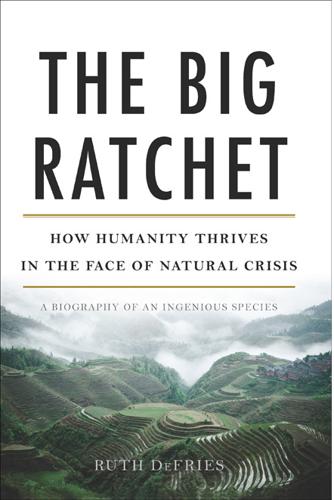
The Big Ratchet: How Humanity Thrives in the Face of Natural Crisis
by
Ruth Defries
Published 8 Sep 2014
More than anything else, it has saved the planet from the scorching fate of Venus and the frozen fate of Mars. It has kept nutrients for plants and animals cycling from land to ocean to deep beneath the surface to the atmosphere and back. It is the most precious, and the least appreciated, foundation for human civilization. As with Earth’s other planetary-scale features, this recycling machinery is not subject to humanity’s control. So far as is known, ours is the only planet where an atom of carbon can find itself cycling from one form to another on time scales as short as seconds and as long as millions of years. Carbon easily bonds with other elements and forms the backbone of all known life.
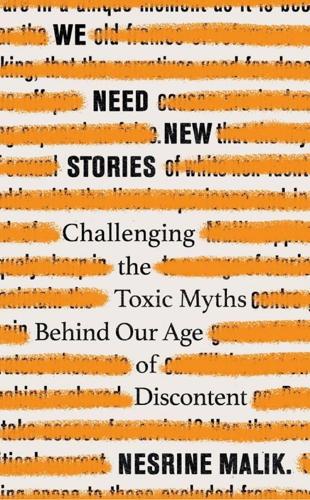
We Need New Stories: Challenging the Toxic Myths Behind Our Age of Discontent
by
Nesrine Malik
Published 4 Sep 2019
Bush’s administration were initially stunned by the event, but soon found themselves swept up in a mood of soaring optimism about the future of both the Republican Party and American power. Their dream, as they launched what they called the Global War on Terror, would be nothing short of creating an eternal Pax Republicana in the United States and a similarly never-ending Pax Americana first in the Greater Middle East and then on a potentially planetary scale.’ In the way Britain has been warped by empire, so has America been warped by the Cold War. The cultural projection that was required made a historical rewriting not only necessary, but a tool of war. And so America’s fundamental myth splits into two. The first is the story of Anglo-Saxons striving for self-governance and individual liberty once they had fled draconian Europe.

EcoVillage at Ithaca Pioneering a Sustainable Culture (2005)
by
Liz Walker
Published 20 May 2005
Roughly a decade later came a related warning from 100 Nobel Prize winners who said that “the most profound danger to world peace in the coming years will stem not from the irrational acts of states or individuals but from the legitimate demands of the world’s dispossessed.” As these two warnings by the world’s senior scientists indicate, powerful trends are now converging into a whole-systems crisis, creating xiii xiv E C O V I L L A G E AT I T H A C A the likelihood of a planetary-scale evolutionary crash within this generation. These “adversity trends” include growing disruption of the global climate, an enormous increase in human populations living in gigantic cities without access to sufficient land and water needed to grow their own food, the depletion of vital resources such as fresh water and cheap oil, the massive and rapid extinction of animal and plant species around the world, growing disparities between the rich and the poor, and the spread of weapons of mass destruction.
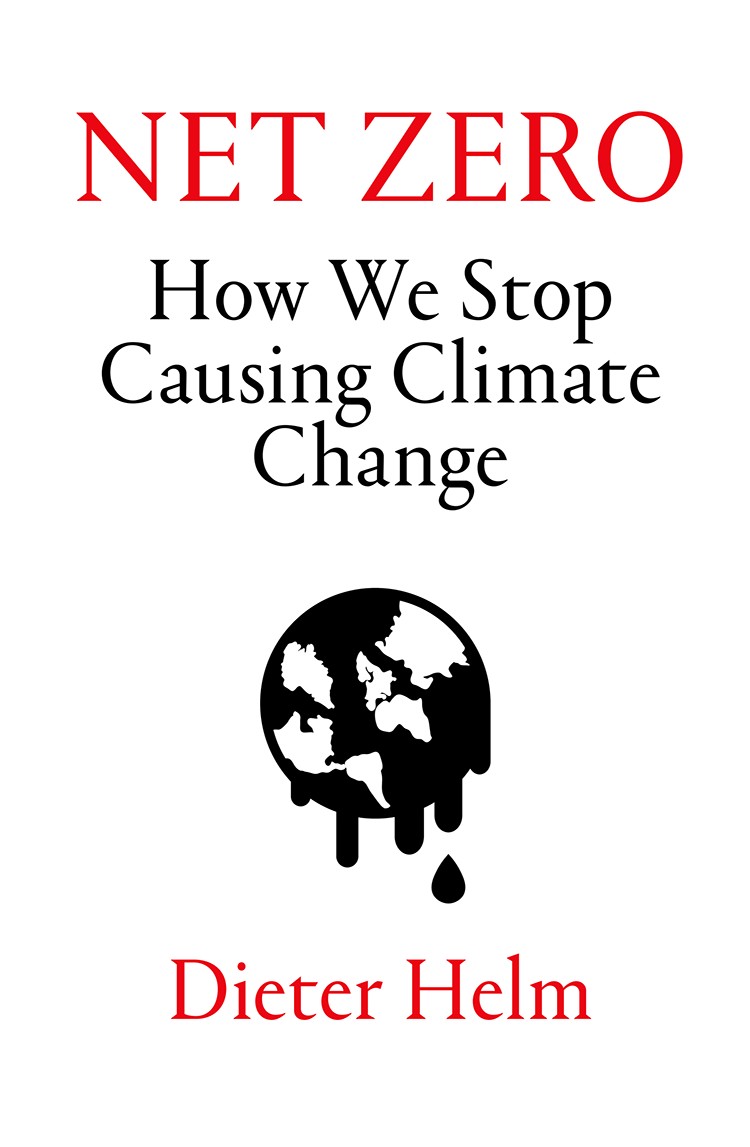
Net Zero: How We Stop Causing Climate Change
by
Dieter Helm
Published 2 Sep 2020
In 1990 Chinese GDP was around US$360 billion. By 2018 it was $13.6 trillion. That is 38 times bigger. To get your head around these astonishing numbers, the UK’s GDP in 1990 was just over $1 trillion, and now it is just over $2.6 trillion. With all this GDP growth comes pollution, and in China’s case pollution on a planetary scale. Every other country in the world pales into insignificance in terms of added environmental pollution since 1990. The Europeans deindustrialised, and the US went sideways. From around 2005, the US had natural gas to substitute for coal, and hence it could both grow and limit its carbon emissions.

Green Swans: The Coming Boom in Regenerative Capitalism
by
John Elkington
Published 6 Apr 2020
So do all manner of cultural warnings, from the hubris around which Greek tragedies are built to the lamentation of King David’s preacher: “Vanity of vanities, all is vanity [. . .] the Earth abideth for ever [. . .] and there is no new thing under the sun.” But the lamentation of vanity can be false modesty. On a planetary scale, intelligence is something genuinely new and powerful. Through the domestication of plants and animals intelligence has remade the living environment. Through industry it has disrupted the key biogeochemical cycles. For good or ill, it will do yet more. We will see a lot more ills before the balance shifts conclusively to the sort of Green Swan pathways that do not lead to “global immiseration.”
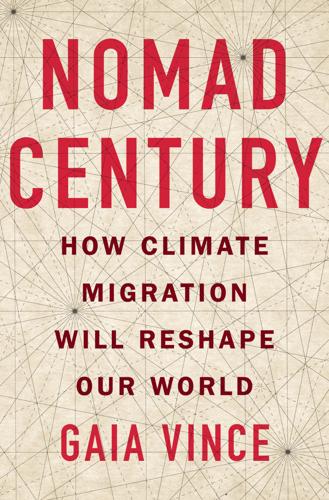
Nomad Century: How Climate Migration Will Reshape Our World
by
Gaia Vince
Published 22 Aug 2022
During the limited decades we live on this earth, people should be free to move to locations with better opportunities and not be trapped purely by accident of birth. * * * Clearly we’re a long way from such flexible borders today, so how might we approach a well-managed system of global mobility? Like climate change, mass migration is an issue that must be managed at the global level. The globalization of human activity and the planetary scale of the issues we face demand a new era of cooperative bodies with teeth to act. We have experienced the consequences of decadal erosion in the powers of global bodies, from our failure to act on greenhouse gas emissions to our failure to vaccinate the global south against Covid in a timely way.

How to Spend a Trillion Dollars
by
Rowan Hooper
Published 15 Jan 2020
The big problem is that we can’t do this yet at any kind of scale to make a difference. For all its world-changing power, carbon dioxide is a trace gas, making up just 0.04 per cent of the atmosphere. That makes it very difficult to get out. We currently have ways to do it, but only on a small scale: we need to do it on a planetary scale, without adding to the carbon dioxide already emitted. Modellers and policy-makers assume that in future this problem will have been solved, but it’s not at all clear that it will be. One way would be to suck the stuff straight out of the air; another is to grow plants for biofuel, burn that to generate electricity, then capture the carbon dioxide produced and bury it underground.

This Changes Everything: Capitalism vs. The Climate
by
Naomi Klein
Published 15 Sep 2014
Drought and famine will continue to be used as pretexts to push genetically modified seeds, driving farmers further into debt.42 In the wealthier nations, we will protect our major cities with costly seawalls and storm barriers while leaving vast areas of coastline that are inhabited by poor and Indigenous people to the ravages of storms and rising seas. We may well do the same on the planetary scale, deploying techno-fixes to lower global temperatures that will pose far greater risks to those living in the tropics than in the Global North (more on this later). And rather than recognizing that we owe a debt to migrants forced to flee their lands as a result of our actions (and inactions), our governments will build ever more high-tech fortresses and adopt even more draconian anti-immigration laws.
…
In recent years, the society has become the most prominent scientific organization to argue that, given the lack of progress on emission reduction, the time has come for governments to prepare a technological Plan B. In a report published in 2009, it called upon the British government to devote significant resources to researching which geoengineering methods might prove most effective. Two years later it declared that planetary-scale engineering interventions that would block a portion of the sun’s rays “may be the only option for reducing global temperatures quickly in the event of a climate emergency.”3 The retreat in Buckinghamshire has a relatively narrow focus: How should research into geoengineering, as well as eventual deployment, be governed?

Everything Is Obvious: *Once You Know the Answer
by
Duncan J. Watts
Published 28 Mar 2011
. ———. 2010. “Saving Energy, and Its Cost.” New York Times, June 15. Lerner, Josh. 2009. Boulevard of Broken Dreams: Why Public Efforts to Boost Entrepreneurship and Venture Capital Have Failed—and What to Do About It: Princeton, NJ: Princeton University Press. Leskovec, Jure, and Eric Horvitz. 2008. “Planetary-Scale Views on a Large Instant-Messaging Network.” 17th International World Wide Web Conference, April 21–25, 2008, at Beijing, China. Levitt, Steven D., and Stephen J. Dubner. 2005. Freakonomics: A Rogue Economist Explores the Hidden Side of Everything. New York: William Morrow & Co. Lewis, Michael. 2009.
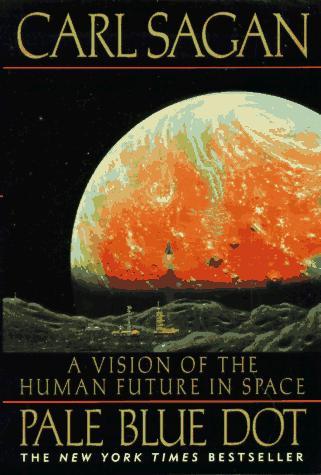
Pale Blue Dot: A Vision of the Human Future in Space
by
Carl Sagan
Published 8 Sep 1997
Industrial poisons, greenhouse gases, and substances that attack the protective ozone layer, because of their abysmal ignorance, do not respect borders. They are oblivious of the notion of national sovereignty. And so, due to the almost mythic powers of our technology (and the prevalence of short-term thinking), we are beginning—on Continental and on planetary scales—to pose a danger to ourselves. Plainly, if these problems are to be solved, it will require many nations acting in concert over many years. I'm struck again by the irony that spaceflight—conceived in tile cauldron of nationalist rivalries and hatreds—brings with it a stunning transnational vision.
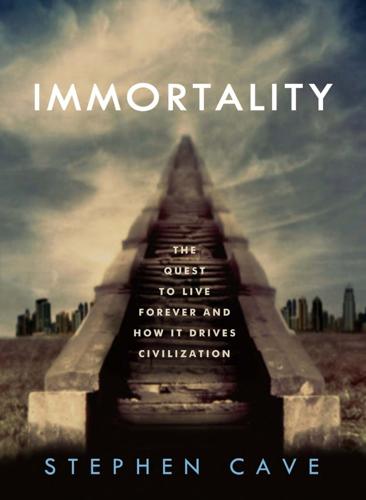
Immortality: The Quest to Live Forever and How It Drives Civilization
by
Stephen Cave
Published 2 Apr 2012
First put forward by the English scientist James Lovelock in the 1970s and named after the Greek goddess of the earth, supporters of the Gaia hypothesis argue that this entire system is directly comparable to what we ordinarily consider a single organism, such as you or me. Lynn Margulis is one such advocate. She writes, “Atmospheric, astronomical, and oceanographic evidence attest that life manifests itself on a planetary scale. The steadiness of mean planetary temperature of the past three thousand million years, the 700-million-year maintenance of earth’s reactive atmosphere between high-oxygen levels of combustibility and low-oxygen levels of asphyxiation, and the apparently continuous removal of hazardous salts from oceans—all these point to mammal-like purposefulness in the organization of life as a whole … Life on Earth—fauna, flora, and microbiota—is a single, gas-entrenched, ocean-connected planetary system, the largest organic being in the solar system.”
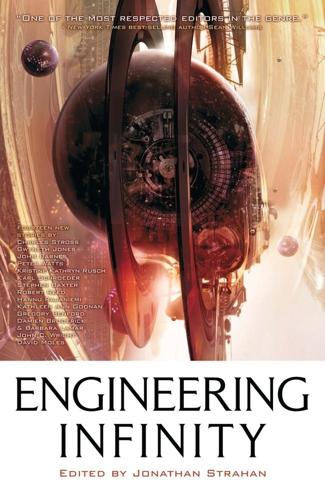
Engineering Infinity
by
Jonathan Strahan
Published 28 Dec 2010
The Lansford Hastings is a starship, one of the fastest mecha ever constructed by the bastard children of posthumanity. From one angle, it may take us centuries to crawl between stars; but there's another perspective that sees us screaming across the cosmos at three thousand kilometres per second. On a planetary scale, we'd cross Sol system from Earth orbit to Pluto in less than two weeks. Earth to Luna in under five minutes. So one of the truisms of interstellar travel is that if something goes wrong, it goes wrong in a split instant, too fast to respond to. Except when it doesn't, of course. When the power goes down, I do what anyone in my position would do: I panic and ramp straight from slowtime up to my fastest quicktime setting.
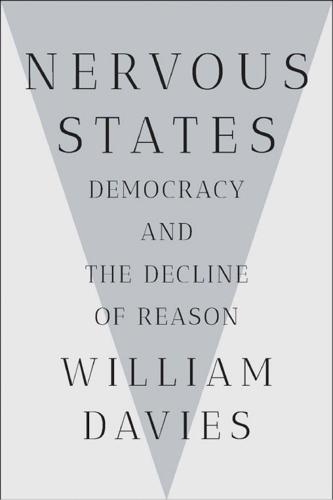
Nervous States: Democracy and the Decline of Reason
by
William Davies
Published 26 Feb 2019
The Boston-based affective computing company Affectiva boasted in 2017 that it had analyzed 4.7 million faces from seventy-five countries.13 Another company spun out of the University of Washington named Megaface has a database of 5 million images of 672,000 people. Ira Kemelmacher-Shlizerman, a computer science professor advising Megaface, argued that “we need to test facial recognition on a planetary scale to enable practical applications—testing on a larger scale lets you discover the flaws and successes of recognition algorithms.”14 Endless expansion of surveillance is justified on the basis that it aids machine learning. Analogue statistical techniques, such as surveys, require us to present our views and preferences in deliberate, objective, and coherent terms, often with a moment of reflection.
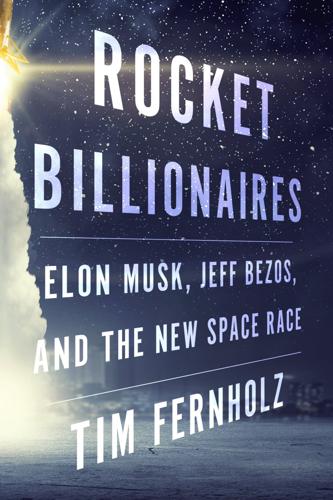
Rocket Billionaires: Elon Musk, Jeff Bezos, and the New Space Race
by
Tim Fernholz
Published 20 Mar 2018
Instead of taking humans away from the planet and into space, why shouldn’t the space industry develop the ability to put heavy industry up there in the cosmos? The vast renewable energy of the sun, the raw materials found on asteroids, and the ability to protect the earth from pollution present an attractive argument for a zoning rewrite on a planetary scale. Beyond the resources, there is also the advantage of microgravity, which allows for advances in materials not available on earth; already, firms are experimenting with making ultra-fast fiber-optic cable in space because it can be constructed with fewer impurities in orbit. “It’s not rocket science; it’s simply straightforward industry,” argues Phil Metzger, a planetary scientist and former NASA engineer.
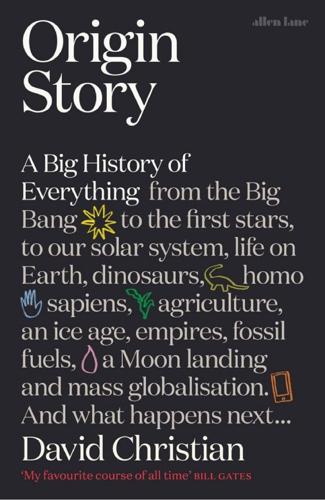
Origin Story: A Big History of Everything
by
David Christian
Published 21 May 2018
Like the appearance of the first oxygen atmosphere or the sudden death of the dinosaurs, this was an example of what the Austrian economist Joseph Schumpeter termed creative destruction—the constant, often violent replacement of the old by the new, which Schumpeter saw as the very heart of modern capitalism. Many societies were ruined, and many lives destroyed. But there was creation, too, because the sheer scale of the first global-exchange networks synergized collective learning on a planetary scale, releasing huge flows of information, energy, wealth, and power that would eventually transform human societies throughout the world. Almost all the advantages lay with the resource-hungry states and empires at the western edge of Afro-Eurasia whose ships had first broken through the barriers between the world zones.

Mine!: How the Hidden Rules of Ownership Control Our Lives
by
Michael A. Heller
and
James Salzman
Published 2 Mar 2021
The stories highlight blows to the environment—unchecked climate change, loss of tropical forests, and crashing fisheries. And they describe perils to individual freedom from tech giants and governments online, through data tracking, algorithmic discrimination, and pervasive surveillance. Even though these are challenges at a national and even planetary scale, they are basically the same as fights over Knee Defenders and droneways, parking chairs and line-standers. All are fights over who gets what and why. Only the stakes are higher. Remember that we are all using the same ownership toolkit. It contains six contested pathways to claiming ownership: first-in-time, possession, labor, attachment, self-ownership, and family.

Being You: A New Science of Consciousness
by
Anil Seth
Published 29 Aug 2021
What is the right granularity of space and time over which to calculate Φ? Is it neurons and milliseconds, or atoms and femtoseconds? Could an entire country be conscious – and would one country be more conscious than another? Could we even consider the interactions of tectonic plates over geological timescales as integrating information on a planetary scale? It’s important to recognise that these challenges – including that of measuring intrinsic information, rather than observer-relative, extrinsic information – are only problems for us as scientists, as external observers, trying to calculate Φ. According to IIT, any particular system would just have a Φ.

MegaThreats: Ten Dangerous Trends That Imperil Our Future, and How to Survive Them
by
Nouriel Roubini
Published 17 Oct 2022
It is particularly pernicious because it involves so many activities of daily life, affects the entire planet, does so for decades and even centuries, and, most of all, because none of us acting individually can do anything to slow the changes.”3 In their alarming book Climate Shock: The Economic Consequences of a Hotter Planet, authors Gernot Wagner and Martin Weitzman predict “the potential for planet-as-we-know-it altering changes.” They frame the challenge correctly: “First and foremost climate change is a risk management problem, a catastrophic risk management problem on a planetary scale.”4 This disaster should catch no one by surprise. Reports on climate change fill books, documentaries, podcasts, newspapers, magazines, social media, films and television talk shows. Why then so little meaningful action? So many science fiction films portray alien threats that erase differences among people who are united in defense of humanity.
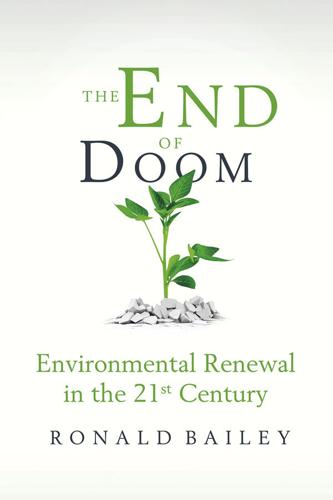
The End of Doom: Environmental Renewal in the Twenty-First Century
by
Ronald Bailey
Published 20 Jul 2015
Finally, and most important, I am greatly indebted to the scores of researchers who shared their time, their scientific findings, their philosophical insights, and their hopes for the future of humanity with me. INTRODUCTION A LITTLE OVER TWO DECADES AGO, I WROTE a book, Eco-Scam: The False Prophets of Ecological Apocalypse, in which I looked closely at prevalent and generally accepted predictions of imminent planetary-scale environmental dooms. I analyzed the psychological appeal of doom, how predictions of disaster function as a political technique aimed at frightening people into handing over power to self-selected elites who want to enact drastic transformations in social and economic institutions. As I explained in my introduction twenty-two years ago, I was initially fascinated by these prophecies of global catastrophe because I had believed them.

Age of Anger: A History of the Present
by
Pankaj Mishra
Published 26 Jan 2017
And now with the victory of Donald Trump it has become impossible to deny or obscure the great chasm, first explored by Rousseau, between an elite that seizes modernity’s choicest fruits while disdaining older truths and uprooted masses, who, on finding themselves cheated of the same fruits, recoil into cultural supremacism, populism and rancorous brutality. The contradictions and costs of a minority’s progress, long suppressed by historical revisionism, blustery denial and aggressive equivocation, have become visible on a planetary scale. They encourage the suspicion – potentially lethal among the hundreds of millions of people condemned to superfluousness – that the present order, democratic or authoritarian, is built upon force and fraud; they incite a broader and more apocalyptic mood than we have witnessed before. They also underscore the need for some truly transformative thinking, about both the self and the world.
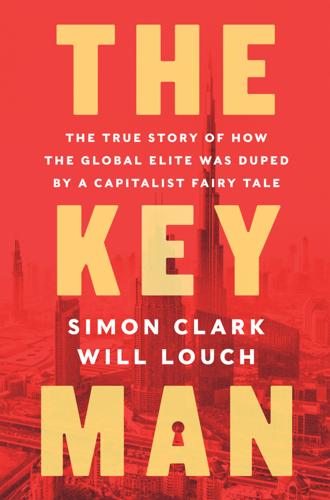
The Key Man: The True Story of How the Global Elite Was Duped by a Capitalist Fairy Tale
by
Simon Clark
and
Will Louch
Published 14 Jul 2021
Carnegie compared industrial society with the Native American Sioux tribe: the wigwam of the chief was, he said, virtually the same as the “poorest of his braves,” but there was a huge difference between “the palace of the millionaire and the cottage of the laborer.” The contrasting homes reflected “the change which has come with civilization,” Carnegie wrote. In the twenty-first century, the gaping chasm between rich and poor was measured in much greater detail and on a planetary scale. The world’s 2,153 billionaires were wealthier than 4.6 billion people in 2019, and the richest twenty-two men in the world owned more wealth than all the women in Africa. The average American annual income of $65,118 was equal to the income of 50 Pakistanis or 129 Afghans. The stewards of the Rockefeller Foundation feared that philanthropy alone couldn’t come close to solving global poverty.

The Heat Will Kill You First: Life and Death on a Scorched Planet
by
Jeff Goodell
Published 10 Jul 2023
But long before that, it has other effects too. Heat causes water to expand (the faster molecules vibrate, the more space they need). It also changes how it moves: cold water sinks, warm water rises. If you think about the water in your bathtub, this might not seem like a big deal. But if you think about it on a planetary scale, it is a very big deal. Water arrived on Earth from the cold depths of space with icy asteroids and comets, which bombarded the planet during the first few million years of its existence. It’s been a watery world ever since. Today, 97 percent of the Earth’s water is in the ocean, which covers more than 70 percent of the planet.
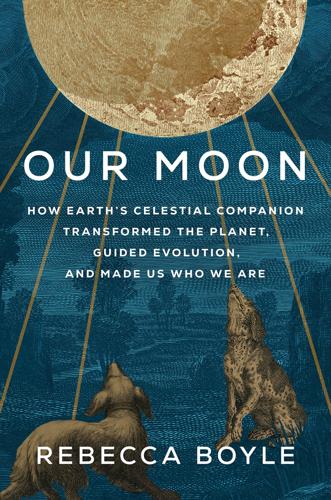
Our Moon: How Earth's Celestial Companion Transformed the Planet, Guided Evolution, and Made Us Who We Are
by
Rebecca Boyle
Published 16 Jan 2024
The Apollo missions became the most expensive nonmilitary program ever, eclipsing even the Panama Canal construction, according to longtime NASA historian Roger D. Launius. The only comparable undertaking in American history is probably the Manhattan Project to build the atomic bomb. Apollo was a planetary-scale boast, a giant risk with high reward, a daring gamble for a youthful nation. It was propaganda at its finest. Its astronauts were upstanding white Protestant men who had traditional families and wore casual pants and drank whiskey from highball glasses. They were red-blooded American heroes who cooked homemade pizzas and played baseball with their kids, then put on spacesuits and did the impossible.

A Walk in the Woods: Rediscovering America on the Appalachian Trail
by
Bill Bryson
Published 8 Sep 2010
chapter 6 Distance changes utterly when you take the world on foot. A mile becomes a long way, two miles literally considerable, ten miles whopping, fifty miles at the very limits of conception. The world, you realize, is enormous in a way that only you and a small community of fellow hikers know. Planetary scale is your little secret. Life takes on a neat simplicity, too. Time ceases to have any meaning. When it is dark, you go to bed, and when it is light again you get up, and everything in between is just in between. It’s quite wonderful, really. You have no engagements, commitments, obligations, or duties; no special ambitions and only the smallest, least complicated of wants; you exist in a tranquil tedium, serenely beyond the reach of exasperation, “far removed from the seats of strife,” as the early explorer and botanist William Bartram put it.
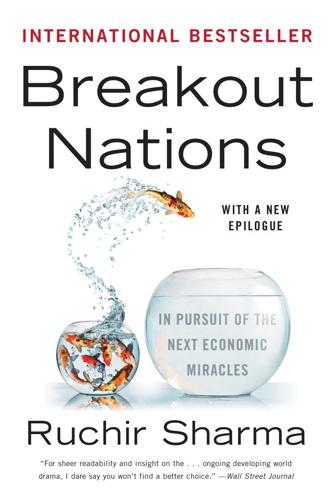
Breakout Nations: In Pursuit of the Next Economic Miracles
by
Ruchir Sharma
Published 8 Apr 2012
The number of nations that beat inflation—containing the annual rate of price increases to less than 5 percent—rose from 16 in 1980 to 103 in 2006. This was the same high-growth and low-inflation “Goldilocks economy” that America enjoyed in the 1990s, only with much faster growth and expanded to a planetary scale, including much of the West. It was a chorus of all nations, singing a story of stable high-speed success, and many observers watched with undiscriminating optimism. The emerging nations were all Chinas now, or so it seemed. This illusion, which in large part persists to this day, is fed by the fashionable explanation for the boom—that emerging markets succeeded because they had learned the lessons of the Mexican peso crisis, the Russian crisis, and the Asian crisis in the 1990s, all of which began when piles of foreign debt became too big to pay.

Arriving Today: From Factory to Front Door -- Why Everything Has Changed About How and What We Buy
by
Christopher Mims
Published 13 Sep 2021
But it turns out that something as seemingly mundane as next-day delivery could not happen without many of the most transformative technologies developed in the past one hundred years. Explaining how tapping a button on your phone yields pretty much any consumer good you could want, at your doorstep, within twenty-four hours also necessitates explaining how all the innovations that make it possible—and the people who use them—come together in a planetary-scale clockwork mechanism whose behavior is impossible to understand without building it up from its smallest constituent parts. The landscape of technologies and systems we’ll traverse ranges from the sublime—the solution of impossible mathematical problems, the nanotechnology of microchips—to the mundane—the perfection of highways, shipping containers, the architecture of large ships, management of ports, and the speedup of all manual and mental labor.

The Coming Wave: Technology, Power, and the Twenty-First Century's Greatest Dilemma
by
Mustafa Suleyman
Published 4 Sep 2023
Whether in Beijing, Berlin, or Burundi, whether an oil major or a family farm, everyone can see, objectively, what is happening to the climate. Data brings clarity. Pessimism aversion is much harder when the effects are so nakedly quantifiable. Like climate change, technological risk can only be addressed at planetary scale, but there is no equivalent clarity. There’s no handy metric of risk, no objective unit of threat shared in national capitals, boardrooms, and public sentiment, no parts per million for measuring what technology might do or where it is. There’s no commonly agreed on or obvious standard we can check year by year.

What to Think About Machines That Think: Today's Leading Thinkers on the Age of Machine Intelligence
by
John Brockman
Published 5 Oct 2015
REIMAGINING THE SELF IN A DISTRIBUTED WORLD MATTHEW RITCHIE Artist Will it happen? It already has. With the gradual fusion of information-storing-and-reporting technologies at the atomic and molecular scales, and the scaling up of distributed and connected information-storing-and-reporting devices at the social and planetary scale (which already exceeds the number of human beings on the planet), the definitions of both machine and thinking have shifted to embrace both inorganic and organic “complexes” and “systemic decisions” as interchangeable terms—mechanically, biologically, physically, intellectually, and even theologically.

More Everything Forever: AI Overlords, Space Empires, and Silicon Valley's Crusade to Control the Fate of Humanity
by
Adam Becker
Published 14 Jun 2025
“I don’t want to say this because climate change is so serious and so hard of a problem, but I think once we have a really powerful superintelligence, addressing climate change will not be particularly difficult for a system like that,” Altman said. “I think this illustrates how big we should dream. You know, if you think about a system where you can say, ‘Tell me how to make a lot of clean energy cheaply,’ ‘Tell me how to efficiently capture carbon,’ and then ‘Tell me how to build a factory to do this at planetary scale’—if you can do that, you can do a lot of other things too.”16 Altman is so confident in this “plan”—solving global warming by asking a nonexistent and ill-defined AGI for three wishes—that he’s willing to gamble our climate and our future on it. “We do need way more energy in the world,” he says.
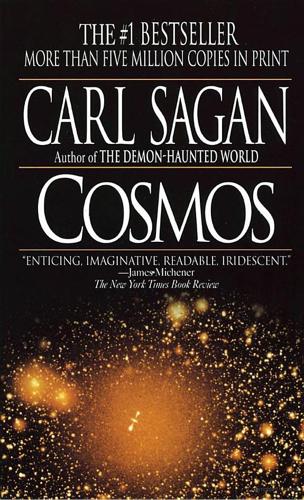
Cosmos
by
Carl Sagan
Published 1 Jan 1980
When humans lived in small groups, when our weapons were comparatively paltry, even an enraged warrior could kill only a few. As our technology improved, the means of war also improved. In the same brief interval, we also have improved. We have tempered our anger, frustration and despair with reason. We have ameliorated on a planetary scale injustices that only recently were global and endemic. But our weapons can now kill billions. Have we improved fast enough? Are we teaching reason as effectively as we can? Have we courageously studied the causes of war? What is often called the strategy of nuclear deterrence is remarkable for its reliance on the behavior of our nonhuman ancestors.

Blockchain Revolution: How the Technology Behind Bitcoin Is Changing Money, Business, and the World
by
Don Tapscott
and
Alex Tapscott
Published 9 May 2016
Ask his legion of followers about Ethereum, and they’ll tell you it’s a “blockchain-based, arbitrary-state, Turing-complete scripting platform.”1 It has attracted IBM, Samsung, UBS, Microsoft, and the Chinese auto giant Wanxiang, and an army of the smartest software developers in the world, all of whom think that Ethereum may be the “planetary scale computer” that changes everything.2 When Buterin explained “arbitrary-state, Turing-complete” to us, we got a glimpse of his mind. Listening to music is very different from reading a book or calculating the day’s revenues and expenses, and yet you can do all three on your smart phone, because your smart phone’s operating system is Turing complete.
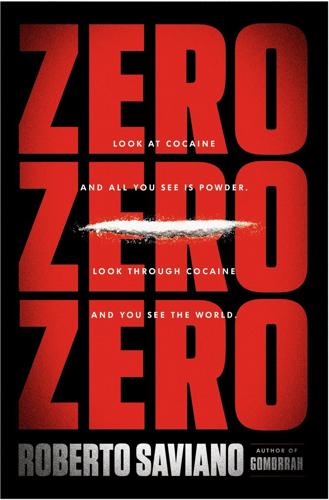
ZeroZeroZero
by
Roberto Saviano
Published 4 Apr 2013
Because if it’s true that a kilo of cocaine in Colombia is sold for $1,500, in Mexico for $12,000 to $16,000, in the United States for $27,000, in Spain for $45,000, in Holland for $47,000, in Italy for $54,000, and in the UK for $77,000; if it’s true that the price per gram varies from $61 in Portugal to $166 in Luxembourg, going for $80 in France, $87 in Germany, $96 in Switzerland, and $97 in Ireland; if it’s true that on average 1 kilo of pure cocaine is cut to make 3 kilos that are then sold in single-gram doses; if all this is true, it’s also true that whoever controls the entire chain of production is one of the richest men in the world. Cocaine traffic today is managed by a new middle class of mafiosi. They use distribution to gain control of the territory where it is sold. A game of Risk on a planetary scale. On one side are the areas where cocaine is produced, which become fiefdoms where nothing but poverty and violence grow, areas the mafias keep under control by generously doling out charity and alms, which they pass off as rights. No development, only profits. If someone wants to better himself, he demands riches, not rights.

Jennifer Morgue
by
Stross, Charles
Published 12 Jan 2006
James Bond was a creature of the Cold War: a strange period of shadow-boxing that stretched from late 1945 to the winter of 1991, forty-six years of paranoia, fear, and the creepy sensation that our lives were in thrall to forces beyond our comprehension. It's almost impossible to explain the Cold War to anyone who was born after 1980; the sense of looming doom, the long shadows cast by the two eyeball-to-eyeball superpowers, each possessing vast powers of destruction, ready and able to bring about that destruction on a planetary scale in pursuit of their recondite ideologies. It was, to use the appropriate adjective, a truly Lovecraftian age, dominated by the cold reality that our lives could be interrupted by torment and death at virtually any time; normal existence was conducted in a soap-bubble universe sustained only by our determination to shut out awareness of the true horrors lurking in the darkness outside it an abyss presided over by chilly alien warriors devoted to death-cult ideologies and dreams of Mutually Assured Destruction.

Iron Sunrise
by
Stross, Charles
Published 28 Oct 2004
The planetary national sport is the grudge match, at which they are undisputed past masters. I say “past masters” for a reason — they’re not as bad as they used to be. The planet has been unified for the past ninety years, since the survivors finished merrily slaughtering everyone else, formed a federation, had a nifty little planetary-scale nuclear war, formed another federation, and buried the hatchet (in one another’s backs). For most of the past forty years, New Dresden has been ruled by a sinister lunatic, Colonel-General Palacky, chairman of PORC, the Planetary Organization of Revolutionary Councils. Most of Palacky’s policies were dictated by his astrologers, including his now-notorious abolition of the currency and its replacement with bills divisible by 9, his lucky number.
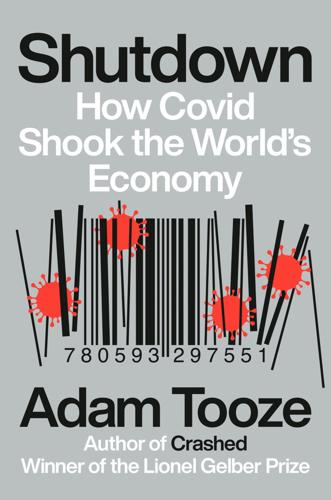
Shutdown: How COVID Shook the World's Economy
by
Adam Tooze
Published 15 Nov 2021
China was facing a full-blown epidemic of a novel coronavirus. It was by that point already worse than the SARS outbreak, which in 2003 had sent shivers down the spine. This was the natural “blowback” that environmental campaigners had long warned us about, but whereas climate change caused us to stretch our minds to a planetary scale and set a timetable in terms of decades, the virus was microscopic and all-pervasive and was moving at a pace of days and weeks. It affected not glaciers and ocean tides, but our bodies. It was carried on our breath. It would put not just individual national economies but the world’s economy in question

Underland: A Deep Time Journey
by
Robert Macfarlane
Published 1 May 2019
Yet we are disinclined to recognize the underland’s presence in our lives, or to admit its disturbing forms to our imaginations. Our ‘flat perspectives’ feel increasingly inadequate to the deep worlds we inhabit, and to the deep time legacies we are leaving. We are presently living through the Anthropocene, an epoch of immense and often frightening change at a planetary scale, in which ‘crisis’ exists not as an ever-deferred future apocalypse but rather as an ongoing occurrence experienced most severely by the most vulnerable. Time is profoundly out of joint – and so is place. Things that should have stayed buried are rising up unbidden. When confronted by such surfacings it can be hard to look away, seized by the obscenity of the intrusion.

The God Delusion
by
Richard Dawkins
Published 12 Sep 2006
This distinction may seem puzzling, and I must explain it further, using the so-called anthropic principle. The anthropic principle was named by the mathematician Brandon Carter in 1974 and expanded by the physicists John Barrow and Frank Tipler in their book on the subject.67 The anthropic argument is usually applied to the cosmos, and I’ll come to that. But I’ll introduce the idea on a smaller, planetary scale. We exist here on Earth. Therefore Earth must be the kind of planet that is capable of generating and supporting us, however unusual, even unique, that kind of planet might be. For example, our kind of life cannot survive without liquid water. Indeed, exobiologists searching for evidence of extraterrestrial life are scanning the heavens, in practice, for signs of water.

The Perfectionists: How Precision Engineers Created the Modern World
by
Simon Winchester
Published 7 May 2018
Quartz, as we discovered back at Seiko, is one such. The seconds presented by a quartz-based timekeeper were unvaryingly precise seconds; and the seconds they soundlessly accumulated turned into precise minutes, precise hours, precise days. And yet, just as with Maxwell’s argument against using a human-scale or even a planetary-scale basis for defining the meter and the kilogram, so in the latter half of the twentieth century it became clear that though quartz is good enough for the average consumer of time, it is manifestly not good enough for the scientist, nor for the national metrology institutes around the world. Which led to the evolution of the standards that are in use today, and which employ one or more members of the more recently invented families of atomic clocks.

Operation Chaos: The Vietnam Deserters Who Fought the CIA, the Brainwashers, and Themselves
by
Matthew Sweet
Published 13 Feb 2018
As Mike was neither its writer nor its addressee, it was hard to understand how he had acquired it, but there it was, a brittle photocopy on the notepaper of the French National Institute of Health and Medical Research. It was addressed to Mark Burdman of the Labor Committees and signed by Stanislaus Tomkiewicz. “Cher Ami,” wrote Tomkiewicz, “you earn my respect and my sympathy for having been the first (after me) to have understood the relationship of Michael Vale with supporters of order on a planetary scale.” The CIA again. On my last day, I accompanied Michael to his doctor. He was awaiting some test results. He emerged beaming from the appointment, clutching an envelope of X-rays that were the evidence of his good news. To celebrate, we went for lunch at Les Deux Magots, the famous haunt of Jean-Paul Sartre and Simone de Beauvoir.

The Controlled Demolition of the American Empire
by
Jeff Berwick
and
Charlie Robinson
Published 14 Apr 2020
Recent history is littered with examples of unfounded fears being ramped up to unimaginable proportions: Bird Flu, Swine Flu, Ebola, SARS, MERS, West Nile Virus…all destined to kill everyone on planet Earth, only to peter out after a few weeks once the media gave up on them for not having a high enough kill rate for their tastes. There will be another, and another after that, and none will end humanity, but the media will give it their best effort to try and sell that potential outcome because nothing puts eyeballs on television news programs quite like the potential of impending death on a planetary scale. A Viral Victory How do the fascists compel thousands and millions of people to meekly go inside, give up their lives, and their livelihoods without a squeak? FEAR is one answer. Military police are being deployed by the thousands to keep the people in check. Women, children, and babies are all subjected to heavily armed men in full combat gear, ready to tear apart families and put them on trucks to quarantine camps or worse.
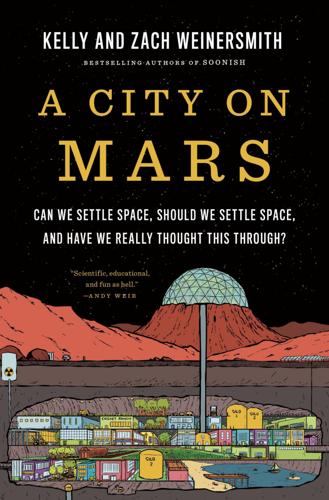
A City on Mars: Can We Settle Space, Should We Settle Space, and Have We Really Thought This Through?
by
Kelly Weinersmith
and
Zach Weinersmith
Published 6 Nov 2023
Regardless of what type of property Moon water is, under the OST, Moon territory is very clearly not res nullius. It’s res communis—“common thing”—a framework in which something is common property. For example, a city might possess a common pasture, where everyone is allowed to graze their sheep. Or a beach might be open to everyone. Or, on the planetary scale, you can think of the atmosphere, which everyone is allowed to use and from which nobody can be excluded. Commons typically require some sort of oversight to prevent overexploitation. For instance, Cattlemen’s Associations were formed in the American West to regulate the overuse of pastures. Similar regulations have been set up for the atmosphere, limiting ozone-depleting substances.

Physics of the Future: How Science Will Shape Human Destiny and Our Daily Lives by the Year 2100
by
Michio Kaku
Published 15 Mar 2011
The 2008 Olympics, for example, were widely interpreted as a coming-out party for the Chinese, who wanted to assume their rightful cultural position in the world after centuries of isolation. This is also an example of the Cave Man Principle, since sports are High Touch but are entering the world of High Tech. • Environmental threats are also being debated on a planetary scale. Nations realize that the pollution they create crosses national boundaries and hence can precipitate an international crisis. We first saw this when a gigantic hole in the ozone layer opened over the South Pole. Because the ozone layer prevents harmful UV and X-rays from the sun from reaching the ground, nations banded together to limit the production and consumption of chlorofluorocarbons used in refrigerators and industrial systems.
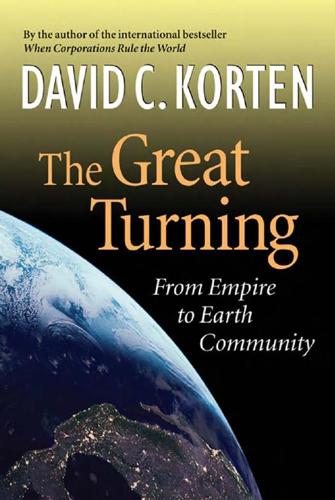
The Great Turning: From Empire to Earth Community
by
David C. Korten
Published 1 Jan 2001
The same technological revolution that brings the imperative for change is also facilitating a global cultural and spiritual awakening to the interdependence of life, the unrealized possibilities of our human nature, and the opportunity before us to bring forth a cultural, economic, and political transformation as a conscious collective choice. It is the work of Ricardo and the Hacienda Santa Teresa on a planetary scale. Millions of people the world over are already engaging in it. Some would call it a reawakening to the spiritual wisdom of our ancient past. Others might liken it to the sense of awe at the wonder and beauty of life that commonly follows a near-death experience. However we choose to characterize it, this awakening is opening the way for an evolutionary leap to a new level of human social, intellectual, and spiritual possibility.
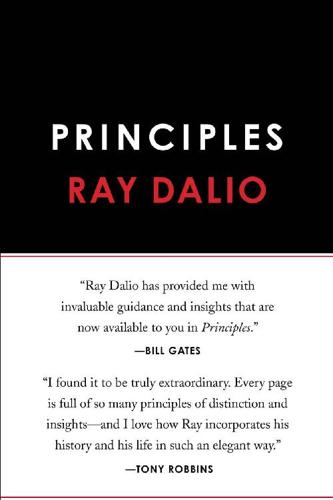
Principles: Life and Work
by
Ray Dalio
Published 18 Sep 2017
When he had just come out with the Tesla and showed me his own car for the first time, he had as much to say about the key fob that opened the doors as he did about his overarching vision for how Tesla fits into the broader future of transportation and how impor-tant that is to our planet. Later on, when I asked him how he came to start his company SpaceX, the audacity of his answer startled me. “For a long time,” he answered, “I’ve thought that it’s inevitable that something bad is going to happen on a planetary scale—a plague, a meteor—that will require humanity to start over somewhere else, like Mars. One day I went to the NASA website to see what progress they were making on their Mars program, and I realized that they weren’t even thinking about going there anytime soon. “I had gotten $180 million when my partners and I sold PayPal,” he continued, “and it occurred to me that if I spent $90 million and used it to acquire some ICBMs from the former USSR and sent one to Mars, I could inspire the exploration of Mars.”

The Zero Marginal Cost Society: The Internet of Things, the Collaborative Commons, and the Eclipse of Capitalism
by
Jeremy Rifkin
Published 31 Mar 2014
Beneath all the surface hyperbole that went along with the colonization of cyberspace, scholars and activists alike were beginning to ask the question of how this new virtual public square—one that is capable of connecting the entire human race for the very first time in history—might change the fundamentals of how society is organized. What consequences would flow from a social space where everyone could reach everyone else, connect, collaborate, and create new ways to interact with one another on a planetary scale—something never before imaginable? I started thinking about writing the book in 1998. I was teaching at the time in the advanced management program at the Wharton School at the University of Pennsylvania. CEOs from around the world were beginning to sniff around the Internet, attempting to figure out whether it posed a threat, an opportunity, or both to their way of doing business.

Accelerando
by
Stross, Charles
Published 22 Jan 2005
But eight out of every ten living humans are included in the phase-change. It's the most inclusive revolution in the human condition since the discovery of speech. A million outbreaks of gray goo – runaway nanoreplicator excursions – threaten to raise the temperature of the biosphere dramatically. They're all contained by the planetary-scale immune system fashioned from what was once the World Health Organization. Weirder catastrophes threaten the boson factories in the Oort cloud. Antimatter factories hover over the solar poles. Sol system shows all the symptoms of a runaway intelligence excursion, exuberant blemishes as normal for a technological civilization as skin problems on a human adolescent.

Dark Mirror: Edward Snowden and the Surveillance State
by
Barton Gellman
Published 20 May 2020
Another program we came across was extraordinarily ambitious: it tried to track and store the location of every device that placed a mobile telephone call, logging each phone’s whereabouts over time, provided that the device could be monitored from a switch outside U.S. territorial limits. Ashkan and I discovered a set of programs that gathered nearly five billion records a day on the whereabouts of cellphones around the world, enabling the agency to track the movements of individuals—and map their relationships—on a planetary scale. There were at least hundreds of millions of devices in this location database. The NSA had no reason to suspect that the movements of the overwhelming majority of cellphone users, individually, would be relevant to national security. It mapped the whole universe, or as much as it could touch lawfully, because the database fed a powerful set of analytic tools known collectively as CO-TRAVELER.

The Precipice: Existential Risk and the Future of Humanity
by
Toby Ord
Published 24 Mar 2020
We can naturally extend this scale in both directions.54 We can include an earlier level for a minimal civilization (for example, the size of civilization in Mesopotamia at the dawn of the written language).55 And we can include an ultimate level at the size of our affectable universe: everything that we could ever hope to reach. Surprisingly, these jumps are very similar in size to those Kardashev identified, continuing the roughly logarithmic scale for measuring the power of civilizations. Level: K0 Civilization Size: Minimal Scale-up: Power: ≈ 108 W Level: K1 Civilization Size: Planetary Scale-up: × 1 billion Power: 2×1017 W Level: K2 Civilization Size: Stellar Scale-up: × 1 billion Power: 4×1026 W Level: K3 Civilization Size: Galactic Scale-up: × 100 billion Power: 4×1037 W Level: K4 Civilization Size: Ultimate Scale-up: × 1 billion Power: 4×1046 W Our global civilization currently controls about 12 trillion Watts of power.
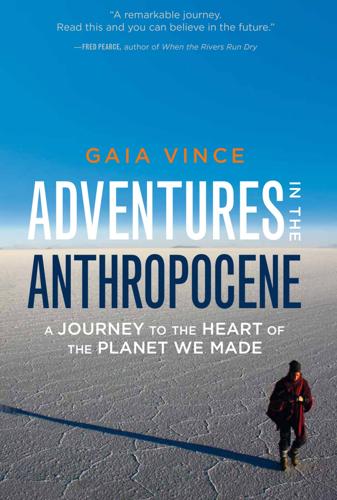
Adventures in the Anthropocene: A Journey to the Heart of the Planet We Made
by
Gaia Vince
Published 19 Oct 2014
This compulsion to arrange our lives and nests into closely packed populations, living in houses organised however chaotically around social buildings like a market, town hall, centre of worship or political seat of governance, is unique to humans and widespread among us. The mastery over our environment that allowed large populations to live together in a small area – diverted and trapped water, acquisition and transport of distant resources, efficient large-scale farming – are all developments that led us to dominate on a planetary scale. But it took the improvement in the last century of sanitation and medicine for city populations to truly explode. Clean water and antibiotics dramatically slashed the death toll and, for the first time, large concentrations of humans could live in relative safety. Cities have grown from the once vast Nineveh – home to 120,000 people in 650 BC – to the megacities of the Anthropocene with more than 10 million inhabitants.

Money: 5,000 Years of Debt and Power
by
Michel Aglietta
Published 23 Oct 2018
Only an ethical principle allows us to transcend the aporias in which liberal-democratic societies are today embroiled. There is a dramatic deterioration of common goods at the social level – where democracy is caught in the clutches of business – and at the environmental level, from the local to the planetary scale. Faced with these threats, the human collectives of the twenty-first century will, or will not, be ethical. We thus need to reinvest in the resources of political philosophy in order to drive transformations of sovereignty, in the sense of direct citizen involvement in state choices. In this domain, the Rawlsian principle of social justice is of fundamental importance.9 In defining justice as fairness, John Rawls offers a solution to the social-contract problem posed by Rousseau.

Coders: The Making of a New Tribe and the Remaking of the World
by
Clive Thompson
Published 26 Mar 2019
Before Facebook, all day long I was doing (and thinking and reading) things my friends might find intriguing. But I had no way to easily broadcast my life, and they had no way to listen; we had to rely on irregular phone calls, drinks at a bar, conversations on the sidewalk. News Feed was, in essence, a massive optimization of our peripheral vision, on a planetary scale. The same thing goes for Uber, which optimized the experience of hailing cars, or Amazon, which did the same thing for shopping, or the many firms creating just-in-time services with “gig” employees. In each case, though, tech firms that are driven maniacally by a zeal for optimization wreak china-shop havoc with any person or government or community that prizes continuity: drivers and employees who’d rather have reliable jobs than piecemeal gigs, neighbors who lose local stores and jobs when they can’t compete with lower-friction online sales.

Grand Transitions: How the Modern World Was Made
by
Vaclav Smil
Published 2 Mar 2021
And while it is unlikely that India will replicate the Chinese boom (its economy still managed nearly a tenfold rise between 1990 and 2017), its continuous growth and further gains elsewhere in South Asia and in Africa make it obvious that—barring a major collapse induced by a large-scale conflict, a severe pandemic, or a planetary-scale natural catastrophe—the age of relatively high worldwide economic growth is far from over, that there are no endogenous economic forces steering the world to very low growth as a prelude to a new stationary economy. That transition remains beyond the foreseeable horizon. Forecasting future growth trajectories of the global economy is thus highly uncertain and if we limit the horizon to the next two generations (40–50 years) we may end up with plausible scenarios encompassing a wide range of outcomes.

As Gods: A Moral History of the Genetic Age
by
Matthew Cobb
Published 15 Nov 2022
Caution, suspicion and even fear are all far more reasonable. In 1989, at the beginning of debates about gene therapy, David Suzuki and Peter Knudtson argued in their book Genethics that ‘Germ-cell therapy, without the consent of all members of society, ought to be explicitly forbidden.’57 While unanimous consent on a planetary scale about anything is unfeasible, the central argument remains valid over forty years later. For years the point of germline genome editing was never systematically questioned by those who should have known better. We have now arrived at a situation in which dreadful procedures have been undertaken, for the weakest of reasons.
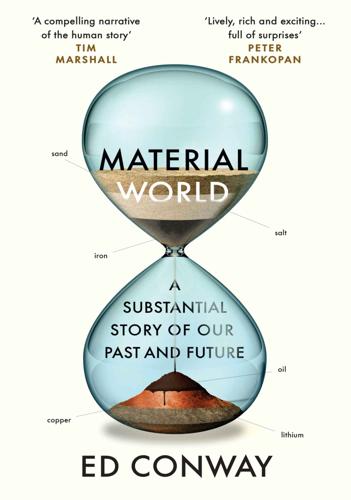
Material World: A Substantial Story of Our Past and Future
by
Ed Conway
Published 15 Jun 2023
This excellent reference book also contains plenty of further material on the history of Chuquicamata. 3 The figures on the current and historic production of Chuquicamata and its sister mines are my own calculations based on data from Codelco, Cochilco (historic figures back to the 1980s) and, for legacy cumulative figures, a paper by Alejandro Faunes et al., ‘Chuquicamata, Core of a Planetary Scale Cu-Mo Anomaly’, in T.M. Porter, Super Porphyry Copper and Gold Deposits – A Global Perspective (PGC, 2005). For some perspective, at the time of writing, while Chuqui’s cumulative historic output stood at just under 45 million tonnes, the equivalent figure for Escondida was just under 30 million tonnes.

Coming of Age in the Milky Way
by
Timothy Ferris
Published 30 Jun 1988
Recollections and correspondence by a pioneer in nuclear fusion. Taton, Rene. History of Science, trans. A.J. Pomerans. London: Basic Books, 1963. —————. Reason and Chance in Scientific Discovery, trans. A.J. Pomerans. New York: Science Editions, 1962. Taube, Mieczyslaw. Evolution of Matter and Energy in Cosmic and Planetary Scale. Killwanger Switz.: self-published, 1982. Taubes, Gary. Nobel Dreams. New York: Random House, 1986. Account of Carlo Rubbia’s quest to identify the W and Z particles predicted by electroweak theory. Taylor, A.E. Aristotle. New York: Dover, 1955. Survey of Aristotle’s thought. —————. Plato: The Man and His Work.
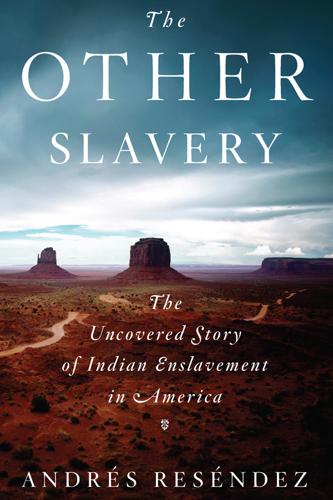
The Other Slavery: The Uncovered Story of Indian Enslavement in America
by
Andrés Reséndez
Published 11 Apr 2016
Unlike African slavery, which remained legal and firmly sustained by racial prejudice and the struggle against Islam, the enslavement of Native Americans was against the law. Yet this categorical prohibition did not stop generations of determined conquistadors and colonists from taking Native slaves on a planetary scale, from the Eastern Seaboard of the United States to the tip of South America, and from the Canary Islands to the Philippines. The fact that this other slavery had to be carried out clandestinely made it even more insidious. It is a tale of good intentions gone badly astray.7 When I began researching this book, one number was of particular interest to me: how many Indian slaves had there been in the Americas since the time of Columbus?

Turing's Cathedral
by
George Dyson
Published 6 Mar 2012
59 He answers that all predictability would vanish in less than one month, “not because of quantum indeterminacy, or even because of macroscopic errors of observation, but because the errors introduced into the smallest turbulent eddies by random fluctuations on the scale of the mean free path (ca 10–5 mm at sea level), although very small initially, would grow exponentially .… The error progresses from 1 mm to 10 km in less than one day, and from 100 km to the planetary scales in a week or two.”60 As to whether climate—the “infinite forecast”—is predictable, the jury is still out. Von Neumann expected that not only would climate become predictable, but it would also be controlled. The balance points, once identified, would be too easy to tip. The real climate change crisis, according to von Neumann, was not whether we can control climate, but how to decide who sits at the controls.
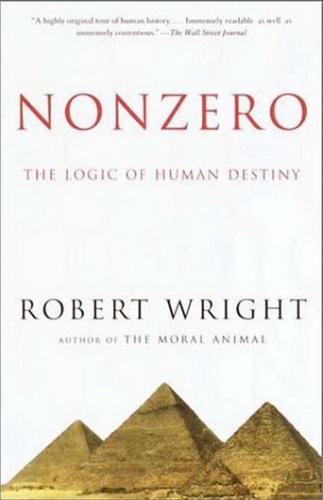
The Moral Animal: Evolutionary Psychology and Everyday Life
by
Robert Wright
Published 1 Jan 1994
Occasionally, watching TV and seeing the suffering of foreigners in a superficially alien culture, a viewer is struck by the realization that, fundamentally, all human beings are alike. Certainly charity in the material sense—donation to the needy—has reached unprecedented geographic scope this century. Of course, it may forever remain true that nothing brings people together, heart to heart, quite like a war. And that sort of bonding, thankfully, is unavailable on a planetary scale. But other common challenges—environmental distress, for example—are not devoid of bonding power. Indeed, the classic experiment on inter-group solidarity suggests that inanimate threats can be quite unifying. Several decades ago, the psychologist Muzafer Sherif used boys in a summer camp (unbeknownst to them) to study human nature.

The Musical Human: A History of Life on Earth
by
Michael Spitzer
Published 31 Mar 2021
It is not going too far to define music as a space in which we negotiate interactions between all these aspects of ourselves: the human, the animal, the machine. Music is a playground in all senses. Most importantly, we now also see that my three timelines in the three parts of this book – Life, History, Evolution – express the fractal pattern of music’s nature at the highest level. This is repetition on a planetary scale. Nevertheless, by way of conclusion, this final chapter will stretch out the spiral into a line, and lay out the lessons of the eleven previous chapters more or less in chronological order, ironing out the wrinkles in time. Eleven variations on a theme, if you like, that theme having emerged at the end, and circling the theme of nature in an historical progression.
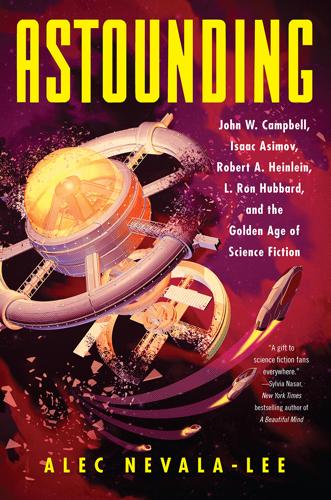
Astounding: John W. Campbell, Isaac Asimov, Robert A. Heinlein, L. Ron Hubbard, and the Golden Age of Science Fiction
by
Alec Nevala-Lee
Published 22 Oct 2018
When he and his friends stumble across a war between two alien cultures, they pick sides based solely on one race’s devilish appearance—a notion that Arthur C. Clarke would later borrow for Childhood’s End—and deploy an entire moon as a weapon. It was comparatively brisk, but only slightly more readable than usual, and cheerfully accepting of genocide on a planetary scale. Tremaine liked “Twilight” as well, but he was concerned that its publication alongside The Mightiest Machine would confuse readers, since it was so different from the author’s previous work. He asked Campbell to use a pseudonym, which he did, choosing a pen name that would double as a private tribute to the most important person in his life.
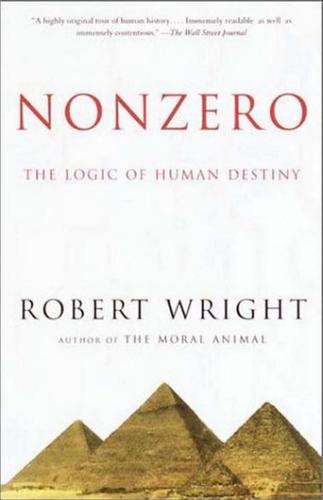
Nonzero: The Logic of Human Destiny
by
Robert Wright
Published 28 Dec 2010
Occasionally, watching TV and seeing the suffering of foreigners in a superficially alien culture, a viewer is struck by the realization that, fundamentally, all human beings are alike. Certainly charity in the material sense—donation to the needy—has reached unprecedented geographic scope this century. Of course, it may forever remain true that nothing brings people together, heart to heart, quite like a war. And that sort of bonding, thankfully, is unavailable on a planetary scale. But other common challenges—environmental distress, for example—are not devoid of bonding power. Indeed, the classic experiment on inter-group solidarity suggests that inanimate threats can be quite unifying. Several decades ago, the psychologist Muzafer Sherif used boys in a summer camp (unbeknownst to them) to study human nature.
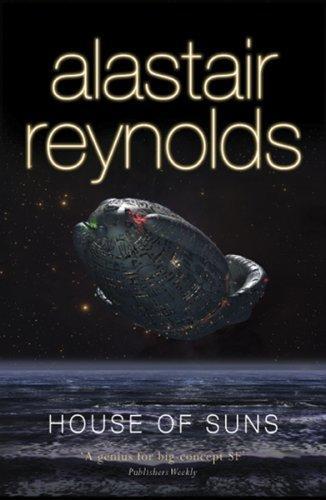
House of Suns
by
Alastair Reynolds
Published 16 Apr 2008
After reaching the size of a decent nebula, and spending a few hundred thousand years in that state, he had decided that enough was enough; that he was ready to engage with human civilisation again, even if it was engagement on his own rather distant terms, even if that engagement meant shrinking himself down to a planetary scale. It was not so much of a hardship, for in the time of his expansion he had learned much about self-preservation. He no longer needed external energy sources. He had observed the early galactic wars of the protohumans and seen what their weapons could do. Provided he took precautions, provided he remained agile, nothing need trouble him again.

Revelation Space
by
Alastair Reynolds
Published 1 Jan 2000
Seventy-nine per cent probability that no one within two hundred kilometres could have survived, unless they were behind a kilometre of armour.' 'Good enough odds for me,' Volyova said. She studied the wound in the surface of Resurgam for a moment longer, evidently satiating herself with the thought of planetary-scale destruction. 1 Alastair Reynolds - Revelation Space Revelation Space FIFTEEN Mantell, North Nekhebet, 2566 'They bluffed,' Sluka said, just as a sudden, false dawn shone over the north-easterly horizon, turning the intervening ridges and bluffs into serrated black cutouts. The glare was magnesiumbright, edged in purple.
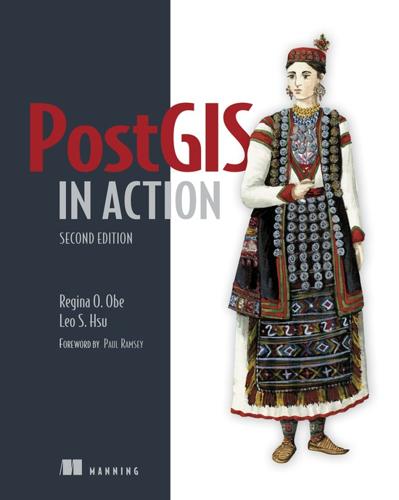
PostGIS in Action
by
Regina O. Obe
and
Leo S. Hsu
Published 2 May 2015
Replace the highway with a lake, and you can determine how many homes surrounding the lake can be considered waterfront property. On a geodetic scale, replace the highway with the continent of Australia, and you can determine the number of islands within territorial waters. From there, you can even go on to a planetary scale and ask how many moons are within 10 million kilometers at perigee. Once you have an initial understanding of the problem, we recommend that you immediately perform a feasibility study, even if it’s just in your mind. You don’t want to devote time to a solution if the problem itself is impossible to solve, lacking specificity, or, worse, you have no available data source.
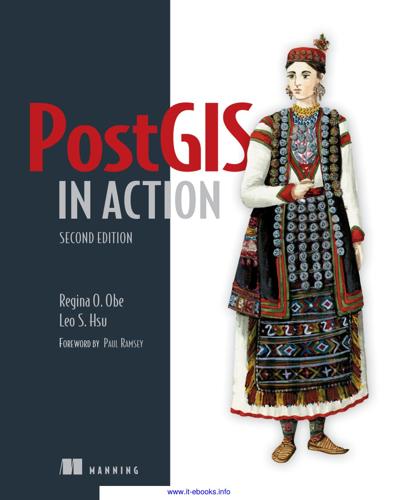
PostGIS in Action, 2nd Edition
by
Regina O. Obe
and
Leo S. Hsu
Published 2 May 2015
Replace the highway with a lake, and you can determine how many homes surrounding the lake can be considered waterfront property. On a geodetic scale, replace the highway with the continent of Australia, and you can determine the number of islands within territorial waters. From there, you can even go on to a planetary scale and ask how many moons are within 10 million kilometers at perigee. Once you have an initial understanding of the problem, we recommend that you immediately perform a feasibility study, even if it’s just in your mind. You don’t want to devote time to a solution if the problem itself is impossible to solve, lacking specificity, or, worse, you have no available data source.

Global Catastrophic Risks
by
Nick Bostrom
and
Milan M. Cirkovic
Published 2 Jul 2008
If molecular manufacturing fulfils its promise, the products of molecular manufacturing will be inexpensive and plentiful, as well as unprecedentedly powerful. New applications could be created, such as fleets of high-altitude uncrewed aircraft acting as solar collectors and sunshades, or dense sensor networks on a planetary scale. General-purpose manufacturing capacity could be stockpiled and then used to build large volumes of products quite rapidly. Robotics could be advanced by the greatly increased functional density and decreased cost per feature associated with computer-controlled nanoscale manufacturing. In the extreme case, it may even make sense to speak of planet-scale engineering, and of modest resources sufficing to build weapons of globally catastrophic power. 2 1 .2 . 3 . 1 Global war If molecular manufacturing works at all, it surely will be used to build weapons.

Growth: From Microorganisms to Megacities
by
Vaclav Smil
Published 23 Sep 2019
This is what Horace wrote two millennia ago in his Satires: “Est modus in rebus, sunt certi denique fines quos ultra citraque nequit consistere rectum” (There is a mean in things, there are, lastly certain limits on either side of which right cannot be found). But two millennia later this is not merely a moral exhortation. The long-term survival of our civilization cannot be assured without setting such limits on the planetary scale. I believe that a fundamental departure from the long-established pattern of maximizing growth and promoting material consumption cannot be delayed by another century and that before 2100 modern civilization will have to make major steps toward ensuring the long-term habitability of its biosphere.

Fall; Or, Dodge in Hell
by
Neal Stephenson
Published 3 Jun 2019
Generating all of that mana took a lot of electricity, not just for the computers but for the cooling systems needed to keep them from overheating. Technology existed for that, and new tech could be invented, but new laws of thermodynamics couldn’t. All cooling systems needed to reject waste heat somewhere—which is why the back of a refrigerator is warm. Thinking on a planetary scale—which, looking ahead to a future Mag 10 system, was the only way you could usefully think—the world was going to become a large spherical refrigerator hurtling through space. It would get energy from the sun and it would eject heat into the universe by aiming vast warm panels into the dark. Working in space was difficult for humans but easy for robots.
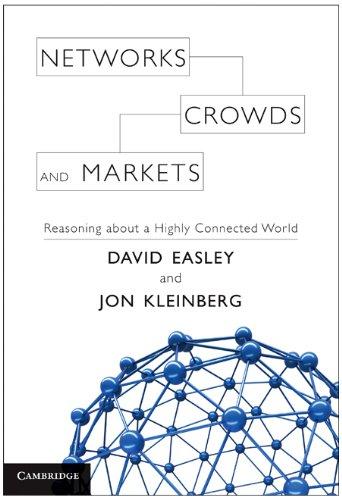
Networks, Crowds, and Markets: Reasoning About a Highly Connected World
by
David Easley
and
Jon Kleinberg
Published 15 Nov 2010
ACM Transactions on the Web, 1(1), May 2007. [268] Jure Leskovec, Lars Backstrom, Ravi Kumar, and Andrew Tomkins. Microscopic evolution of social networks. In Proc. 14th ACM SIGKDD International Conference on Knowledge Discovery and Data Mining, pages 462–470, 2008. [269] Jure Leskovec and Eric Horvitz. Worldwide buzz: Planetary-scale views on an instant-messaging network. In Proc. 17th International World Wide Web Conference, 2008. [270] Jure Leskovec, Kevin J. Lang, Anirban Dasgupta, and Michael W. Mahoney. Statistical properties of community structure in large social and information networks. In Proc. 17th International World Wide Web Conference, pages 695–704, 2008.

Judas Unchained
by
Peter F. Hamilton
Published 1 Jan 2006
‘By far the worst impact is the hemisphere facing the star during flare time. The rest is manageable. Look at Far Away, the flare lasted for weeks there, and we managed to regenerate the continents. That whole planet is alive again. You’re not going to have people running out of oxygen. The time it’ll take to restore the carbon cycle is insignificant on a planetary scale.’ ‘I’ve actually been to Far Away,’ Justine said. ‘It is minimally habitable, and that’s after over a century and a half of gruelling effort. It’s a huge mistake to class it among normal H-congruous worlds. These New48 will not be habitable; we have to get the populations off. I don’t know about Wessex, that’s exceptional, but the rest must be evacuated.’

California
by
Sara Benson
Published 15 Oct 2010
GRIFFITH OBSERVATORY & PLANETARIUM After four years and $93 million, this landmark 1935 observatory (Map; 213-473-0800; www.griffithobservatory.org; 2800 Observatory Rd; admission free, planetarium shows adult/child/student & senior $7/3/5; noon-10pm Tue-Fri, 10am-10pm Sat & Sun; ) reopened in 2006 and now boasts the world’s most advanced star projector in its planetarium – phone or check the website for show times. In the lower level is the Big Picture, a 150ft floor-to-ceiling digital image of a sliver of the universe bursting with galaxies, stars and lurking dark matter. For more tangible thrills, weigh yourself on nine planetary scales (weight-watchers should go for Mercury), generate your own earthquake or head to the rooftop to peek through the refracting and solar telescopes housed in the smaller domes. From here, sweeping views of the Hollywood Hills and the gleaming city below are just as spectacular, especially at sunset.

Rationality: From AI to Zombies
by
Eliezer Yudkowsky
Published 11 Mar 2015
Apparently an experiment is underway to demonstrate quantum superposition at 50-micrometer scales, which is bigger than most neurons and getting up toward the diameter of some human hairs! So why doesn’t someone try jumping ahead of the game, and ask: Say, we keep having to postulate the collapse occurs steadily later and later. What if collapse occurs only once superposition reaches planetary scales and substantial divergence occurs—say, Earth’s wavefunction collapses around once a minute? Then, while the surviving Earths at any given time would remember a long history of quantum experiments that matched the Born statistics, a supermajority of those Earths would begin obtaining non-Born results from quantum experiments and then abruptly cease to exist a minute later.